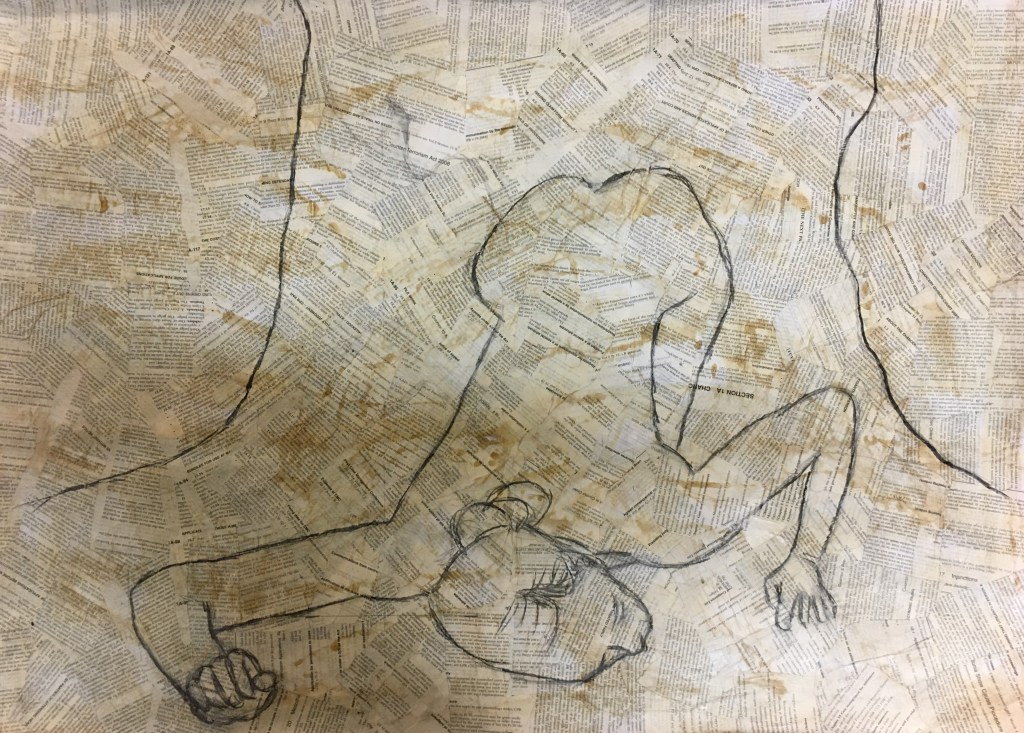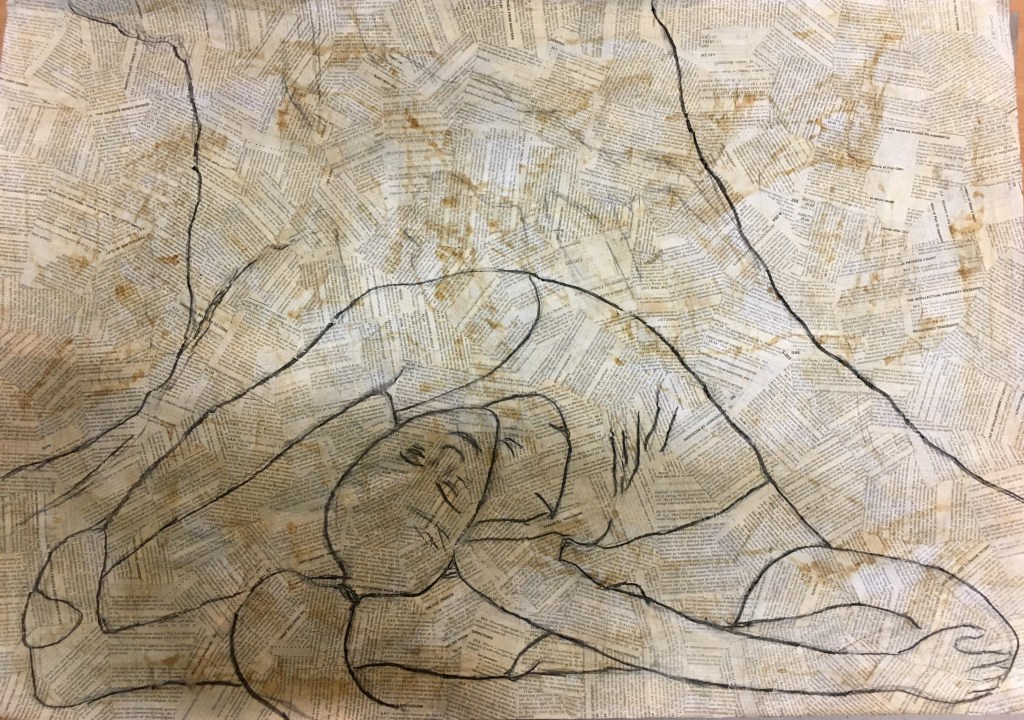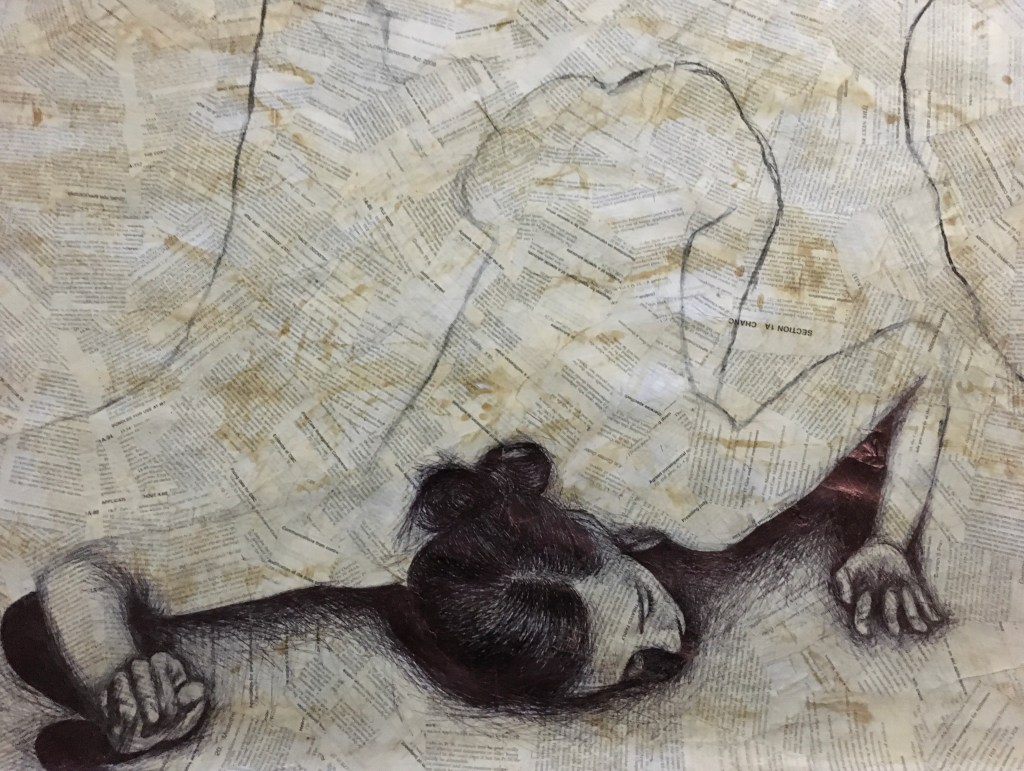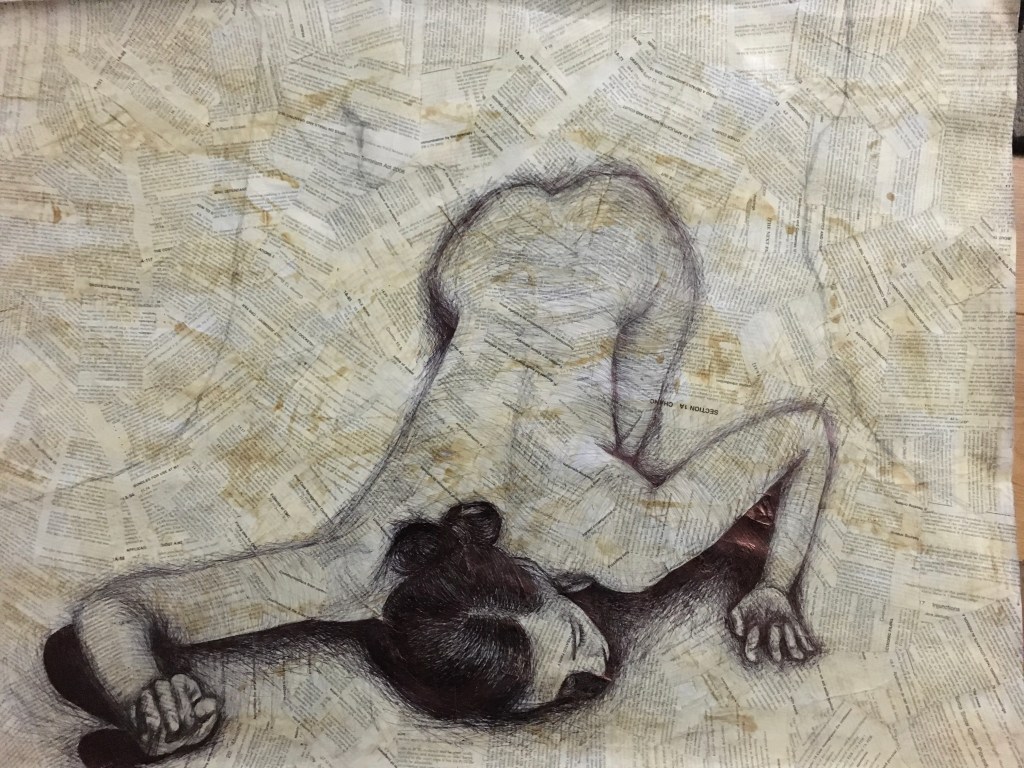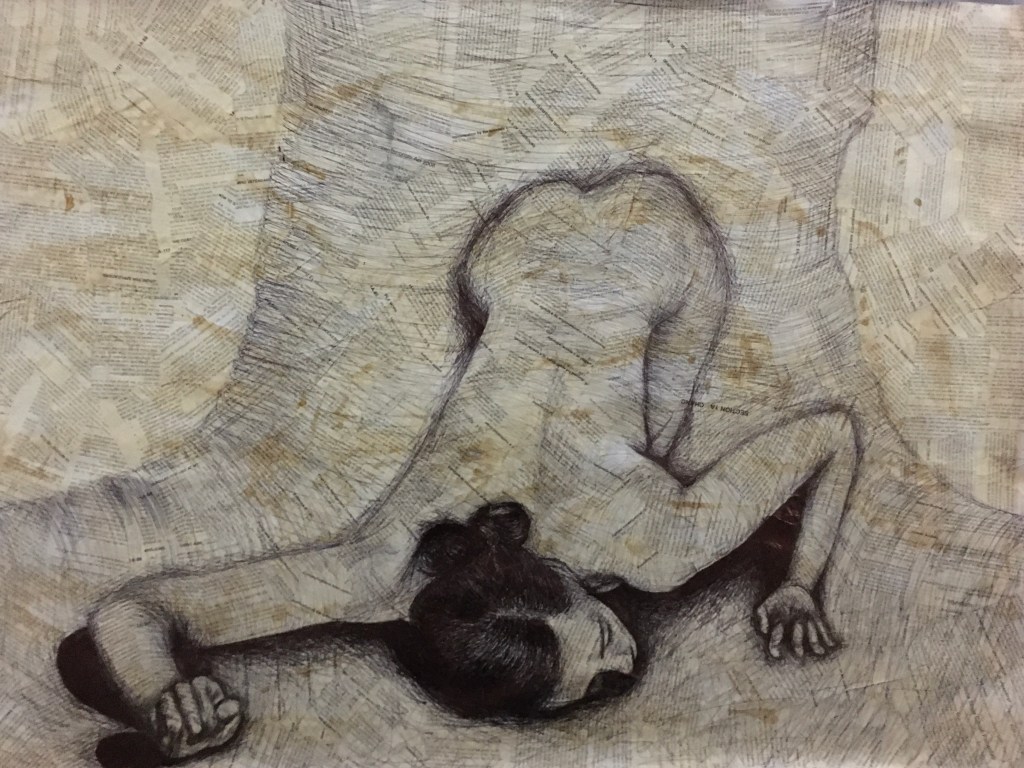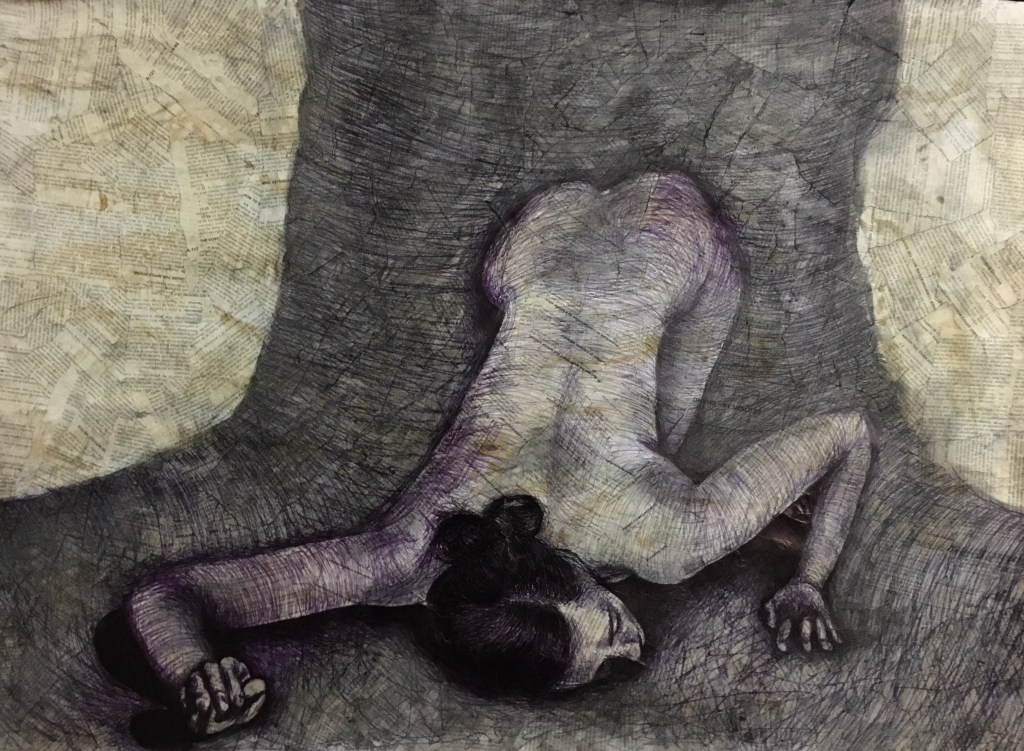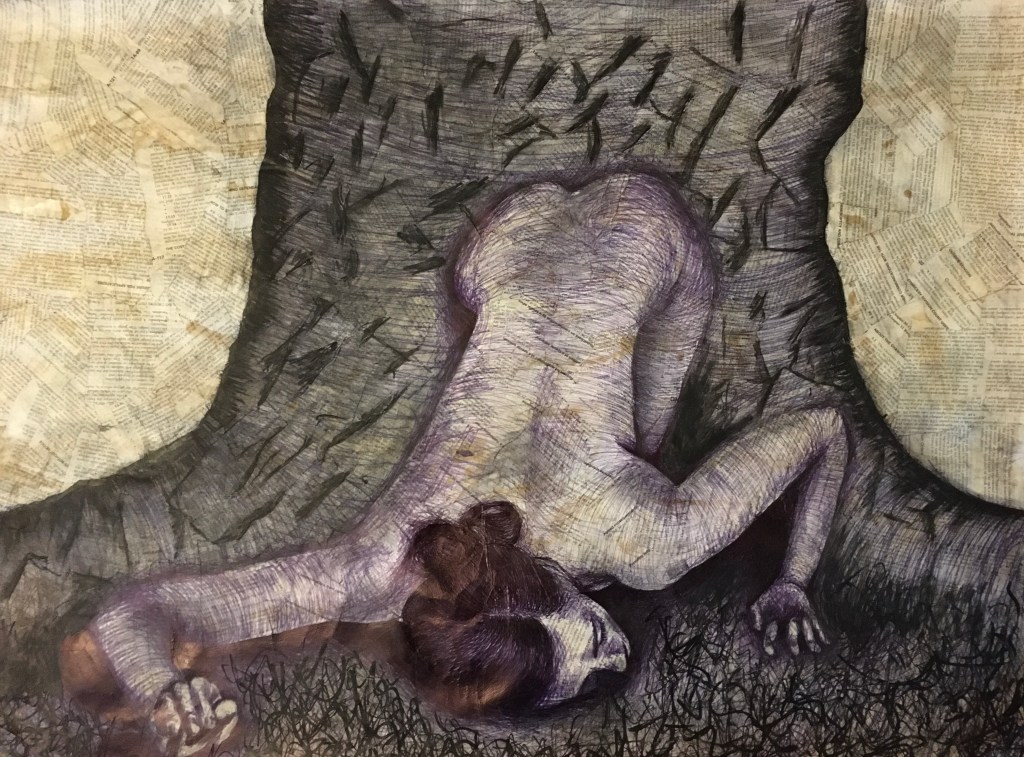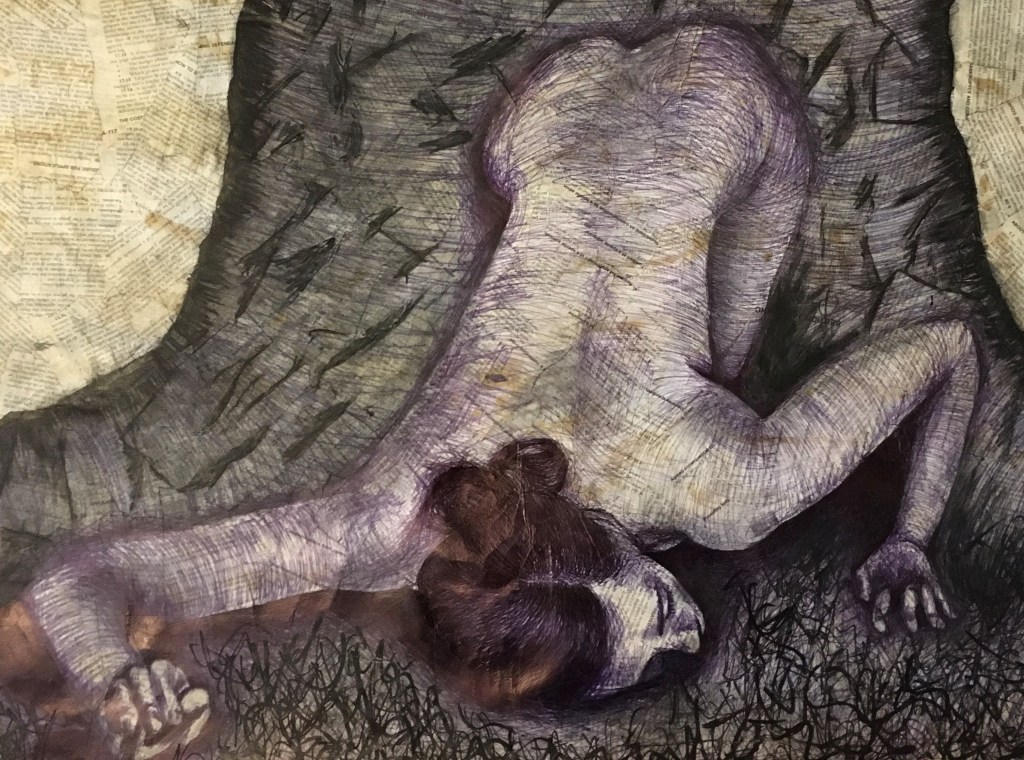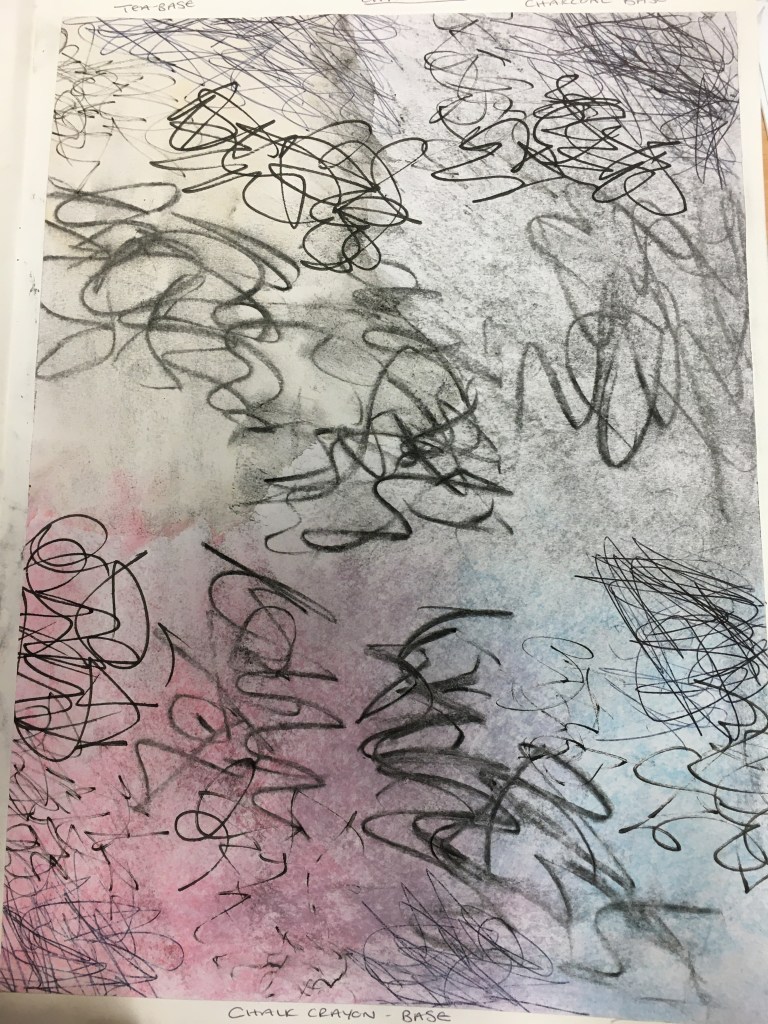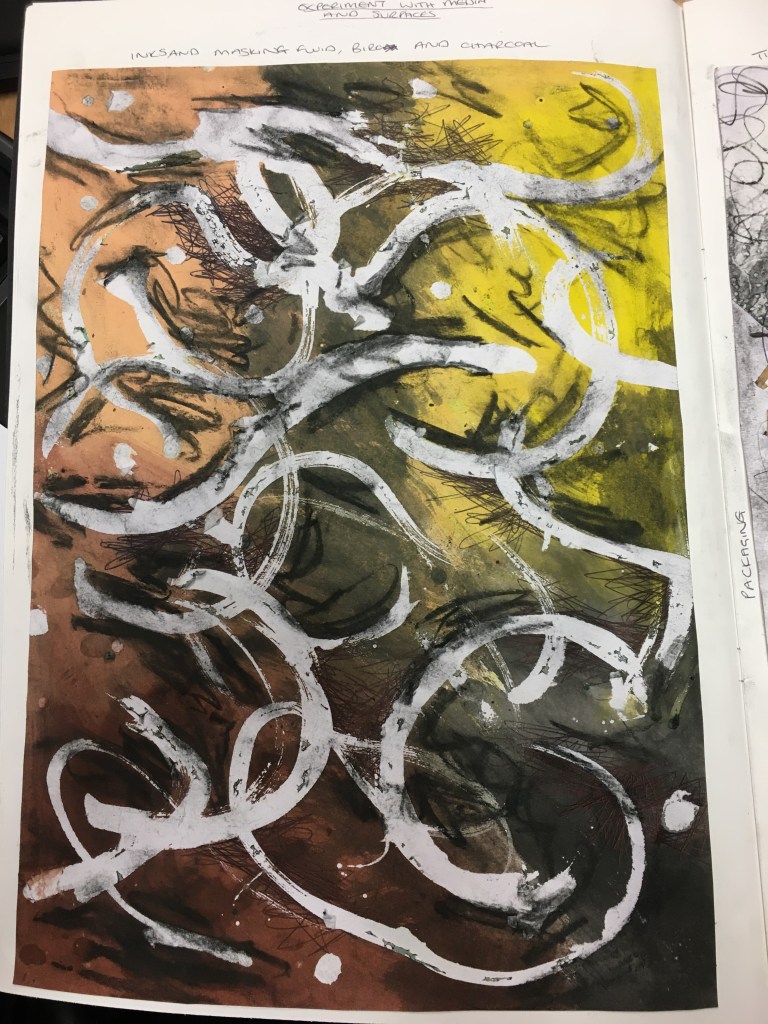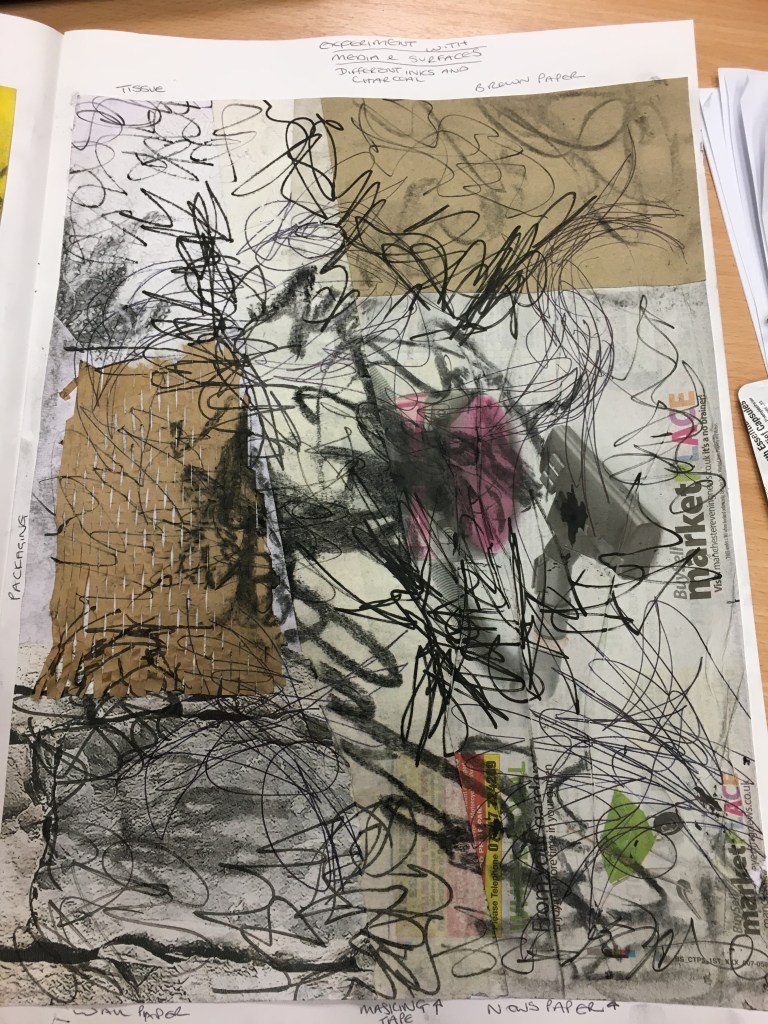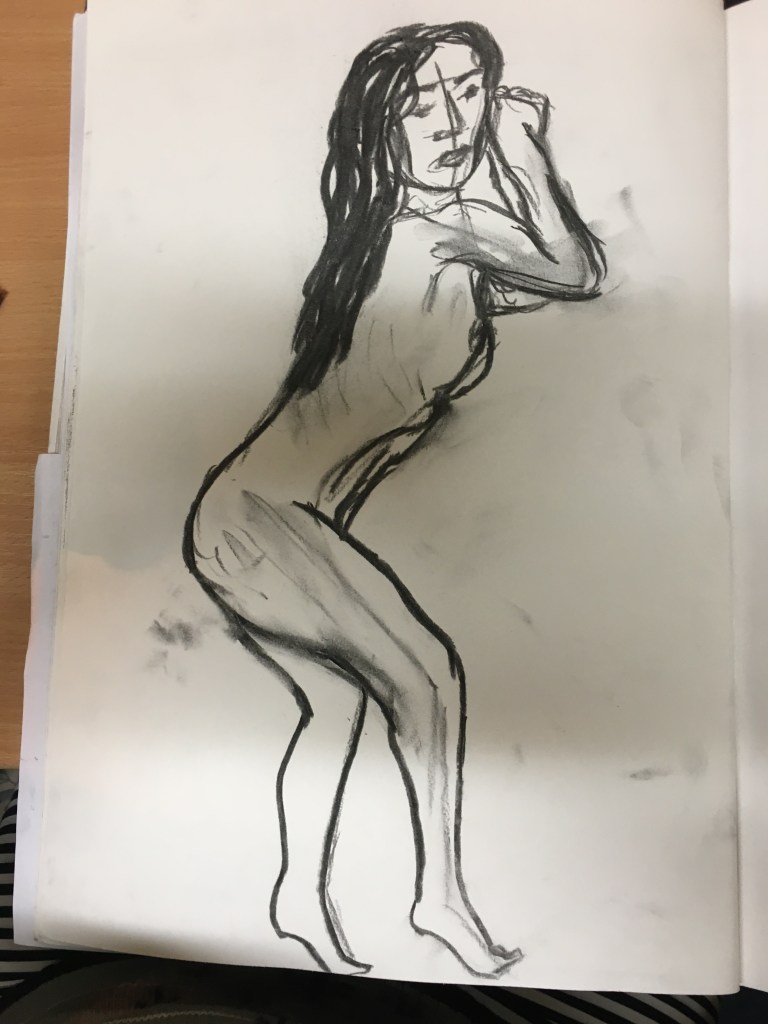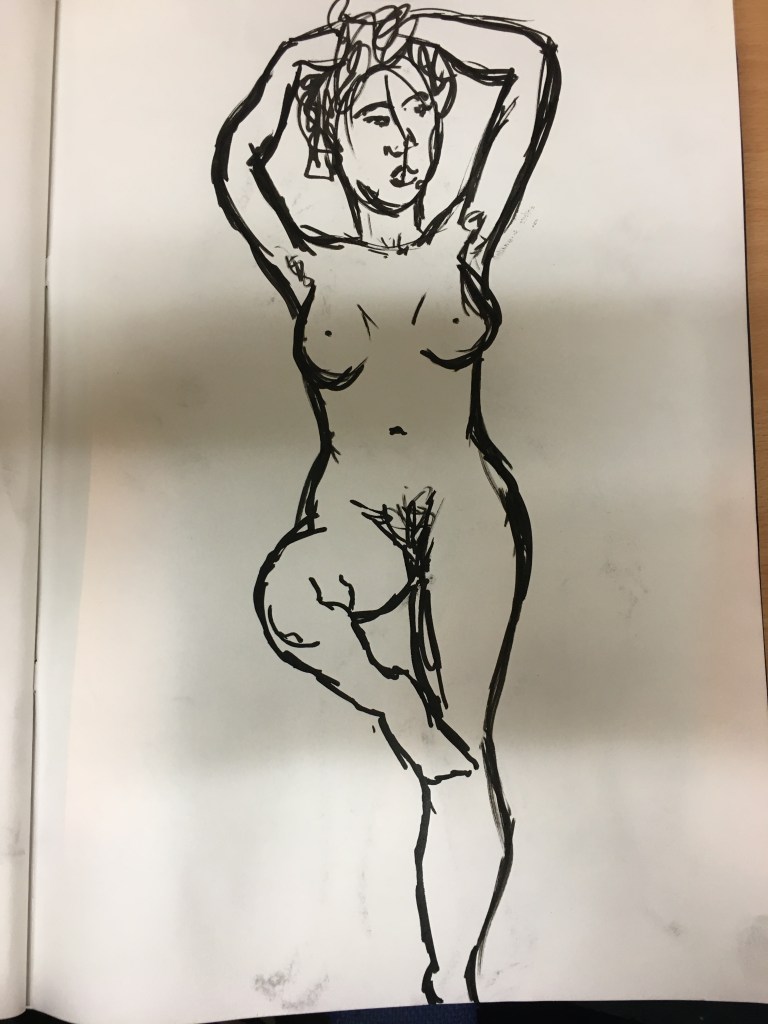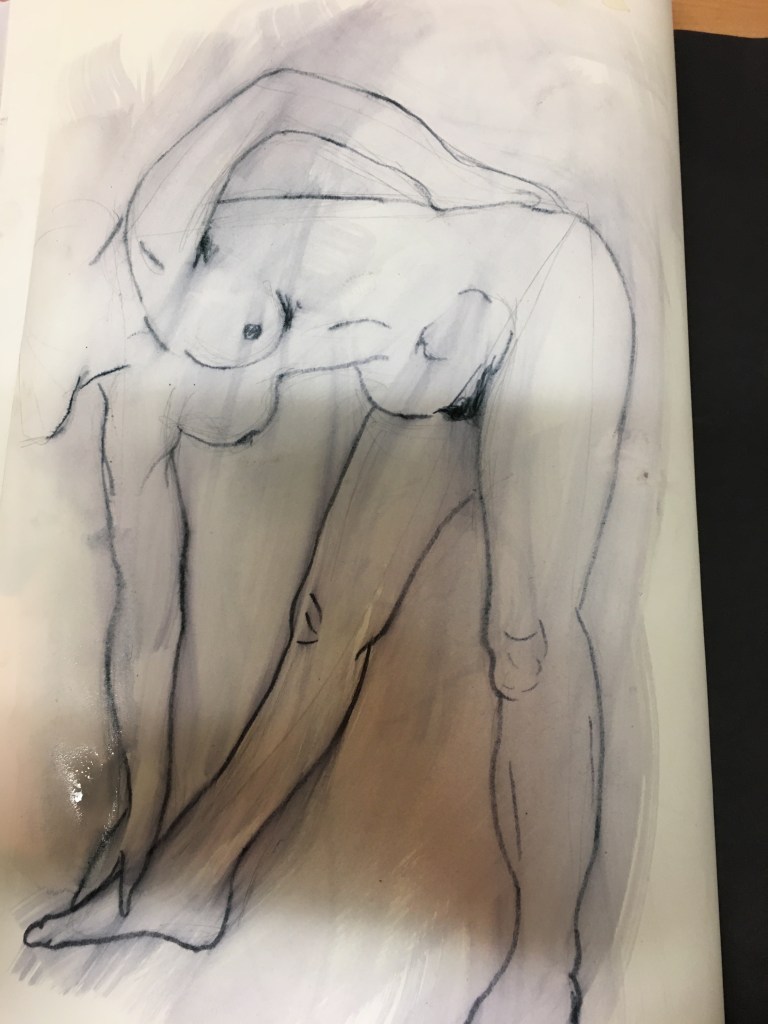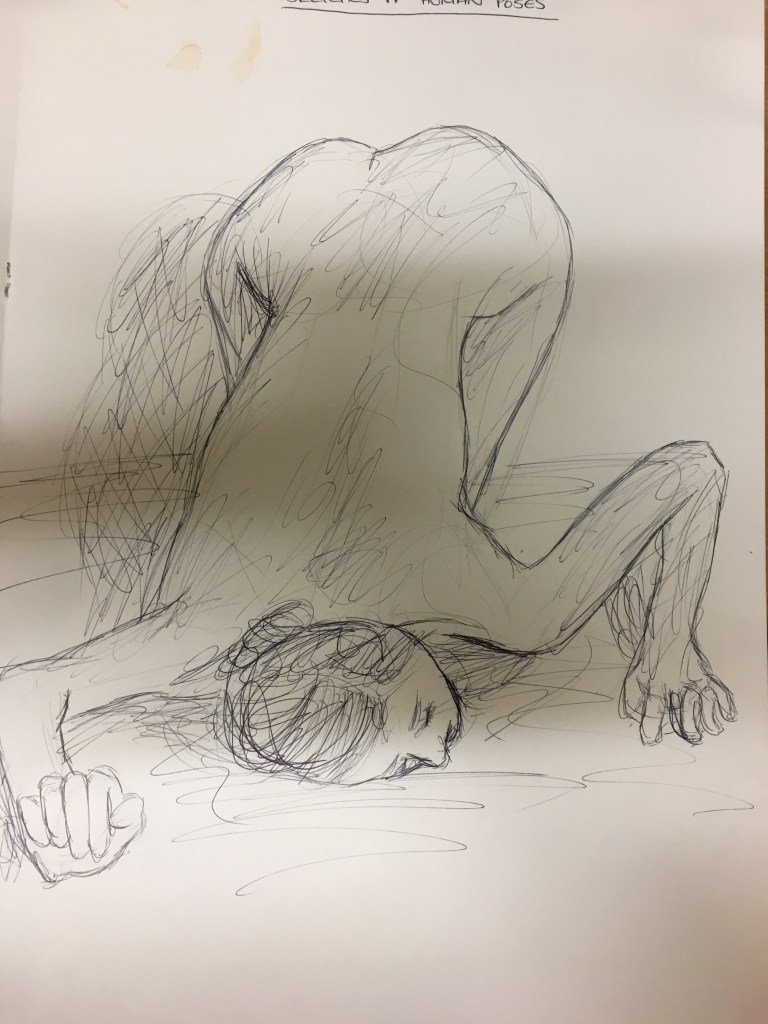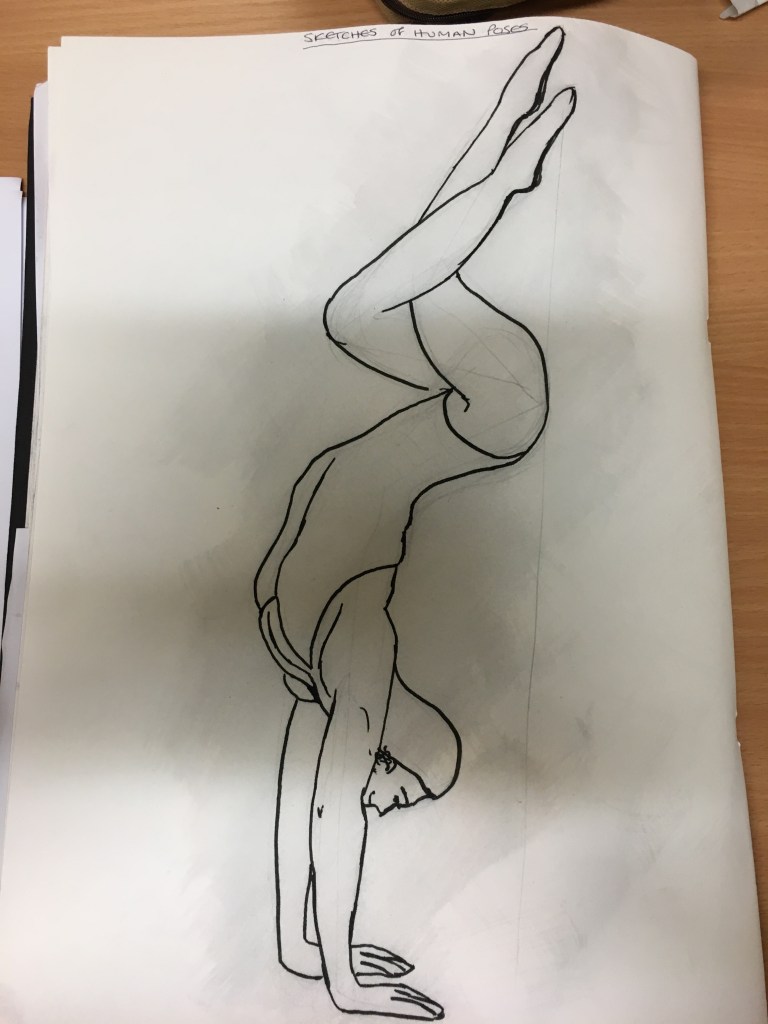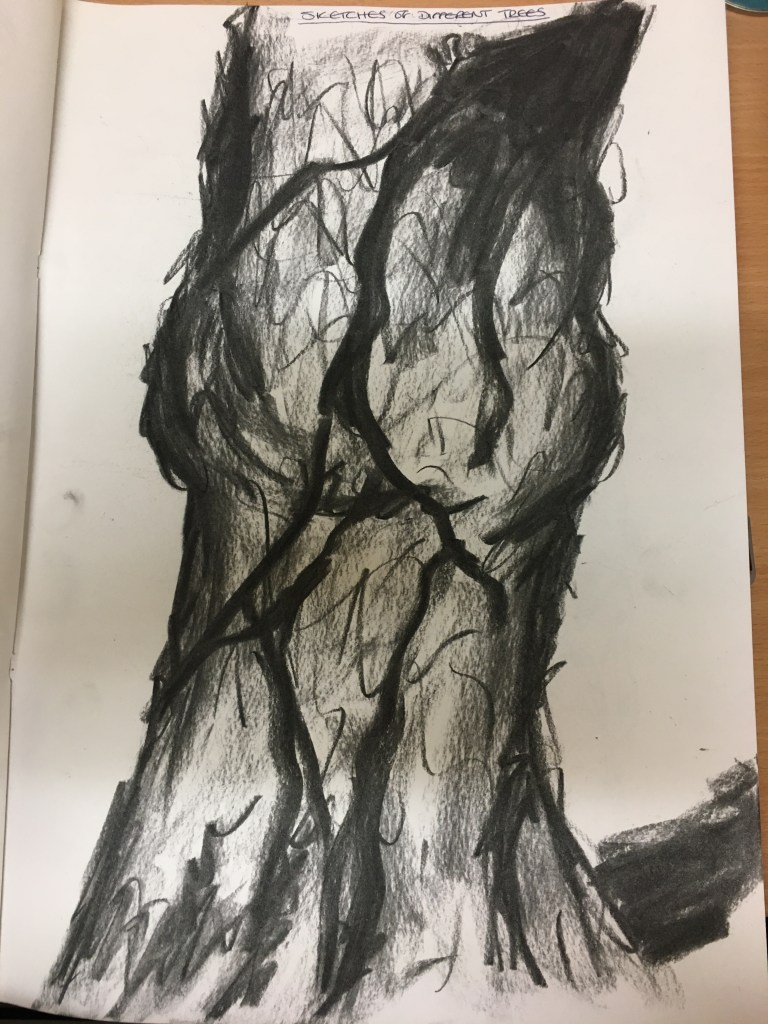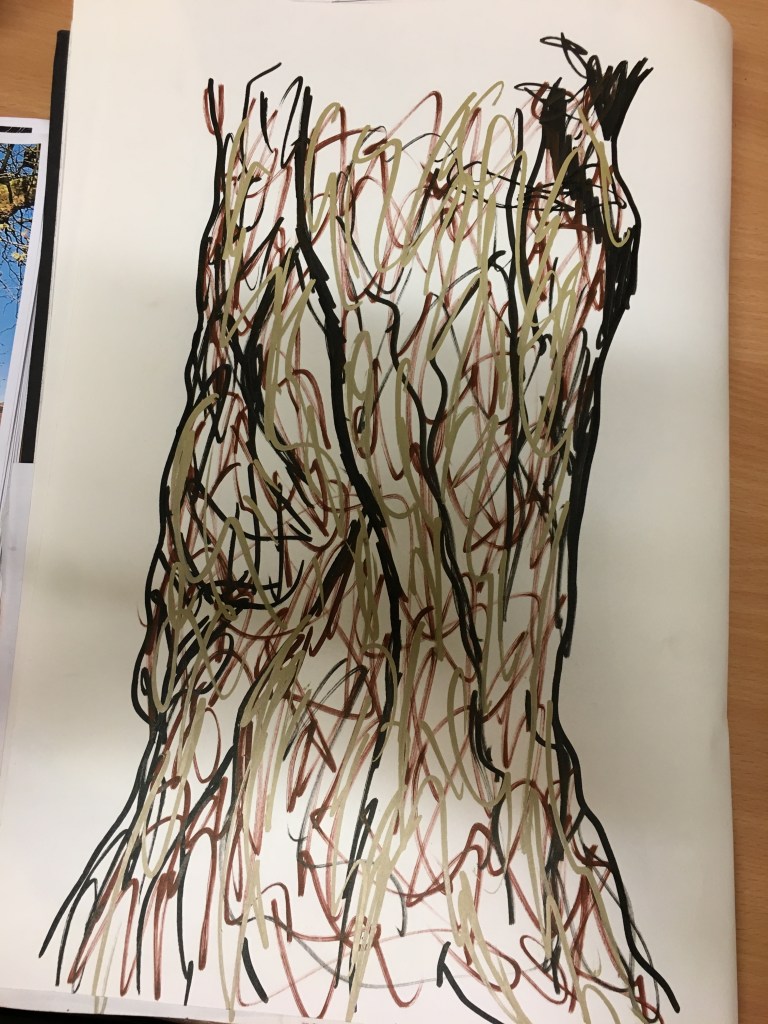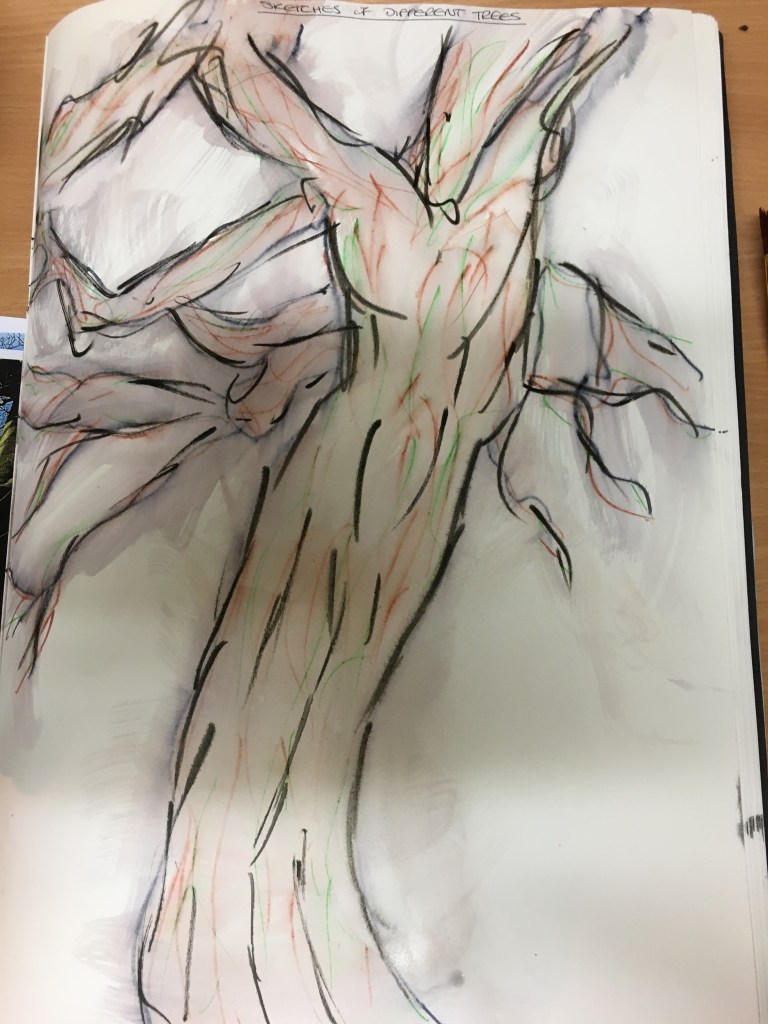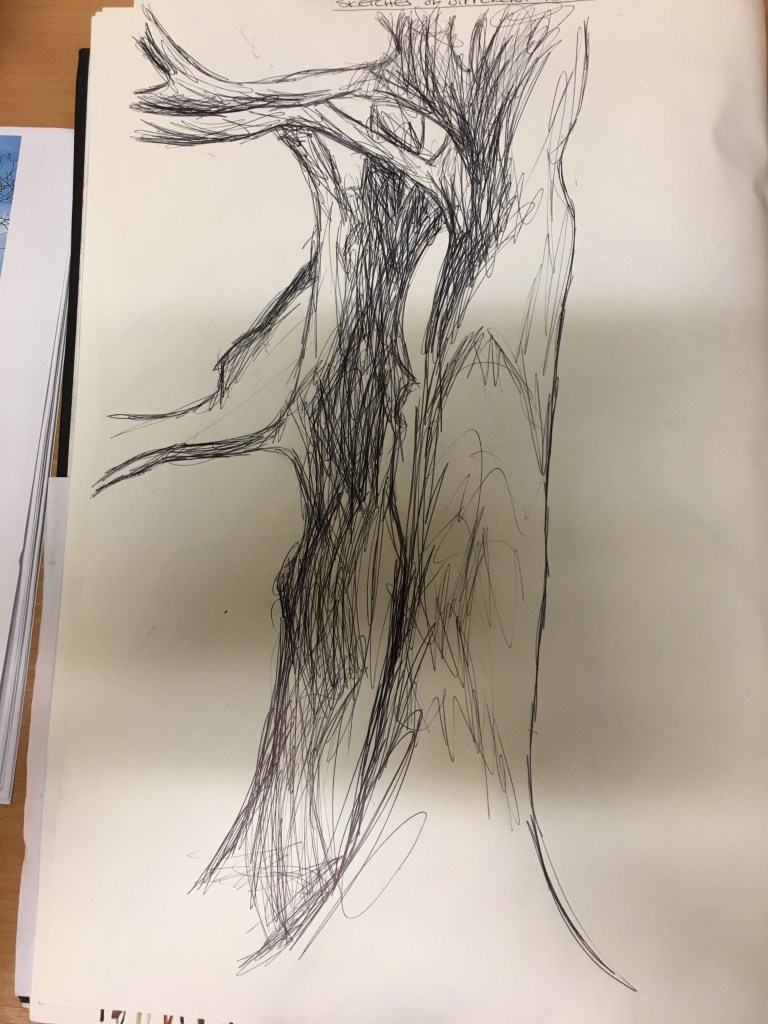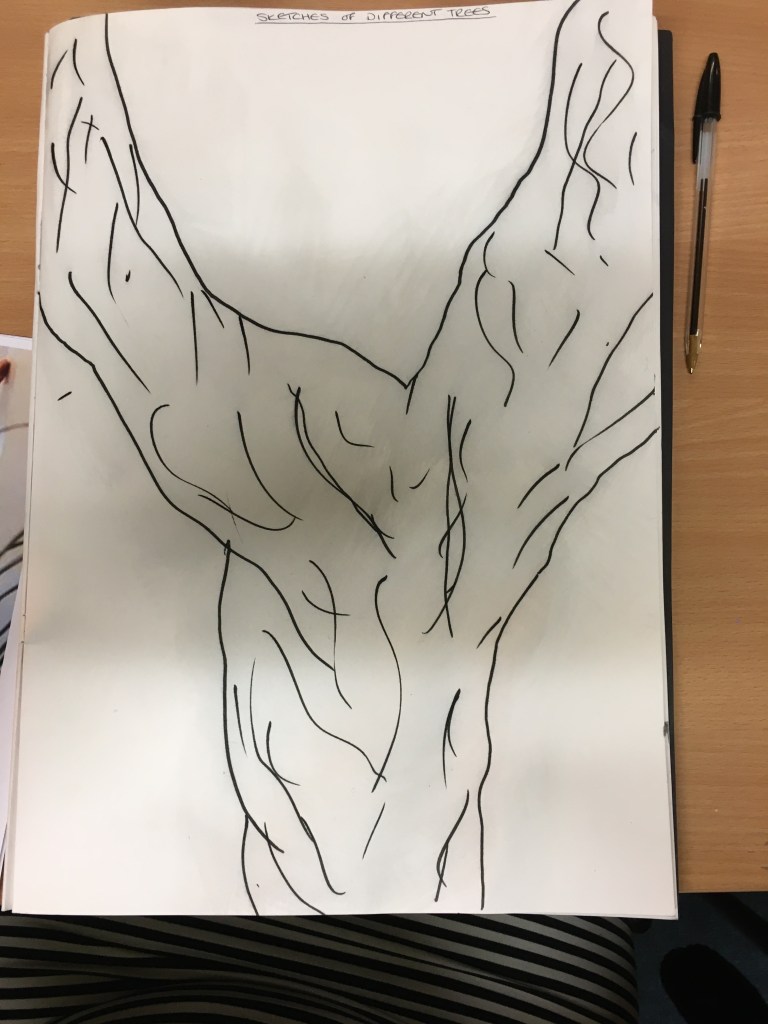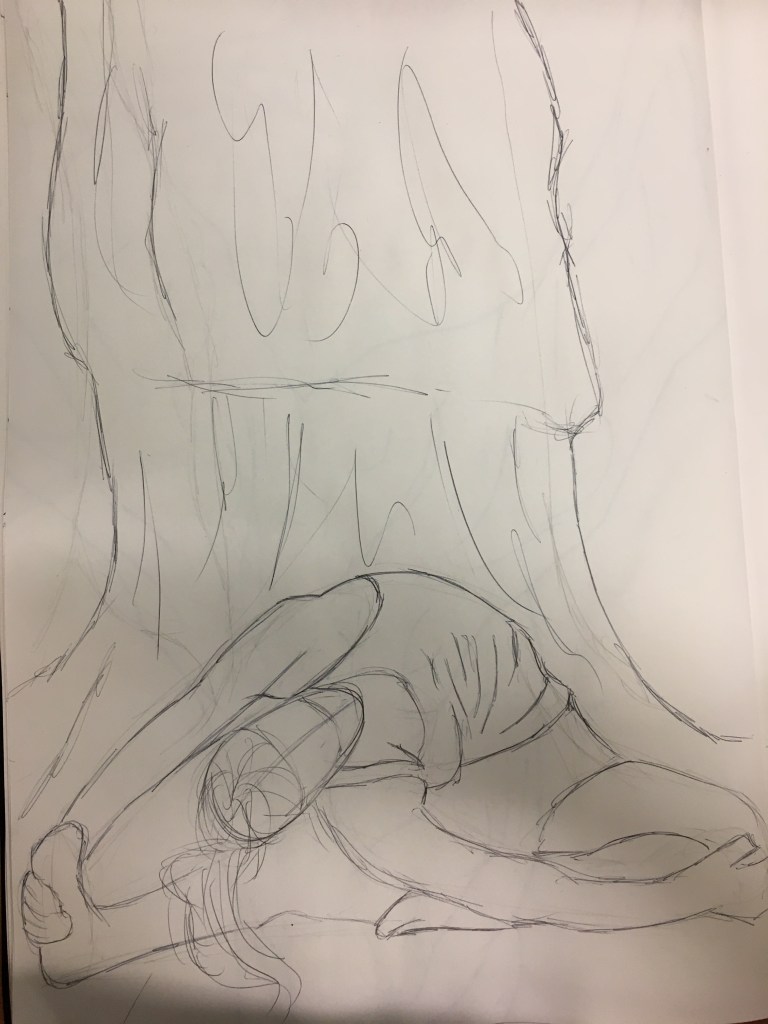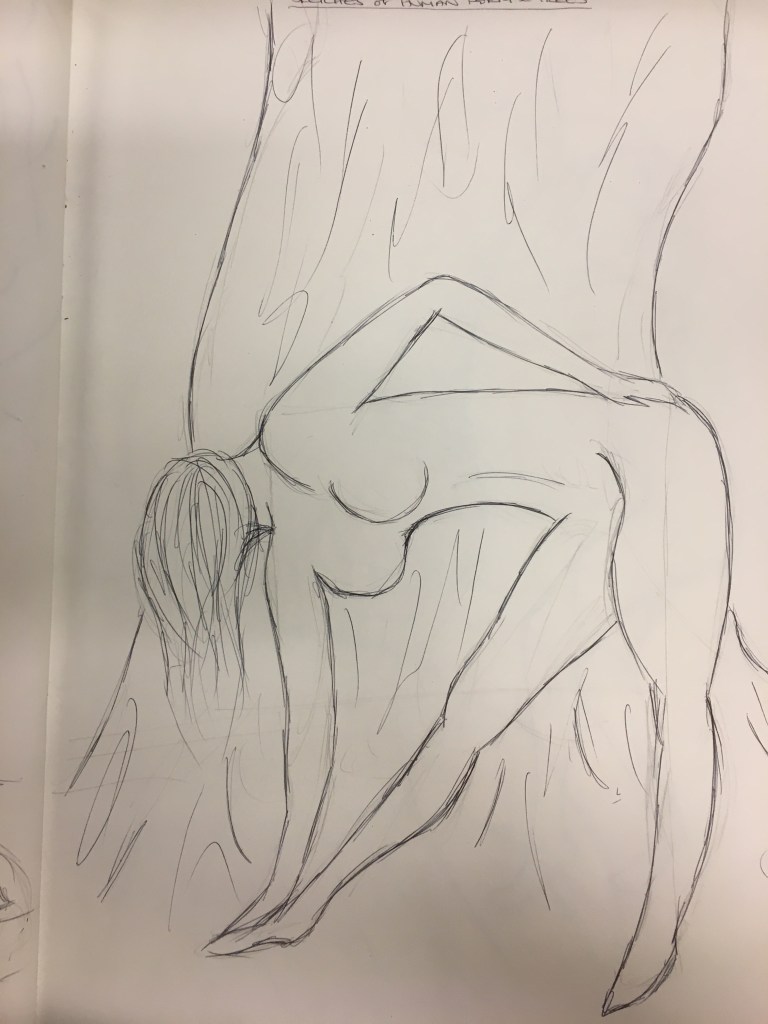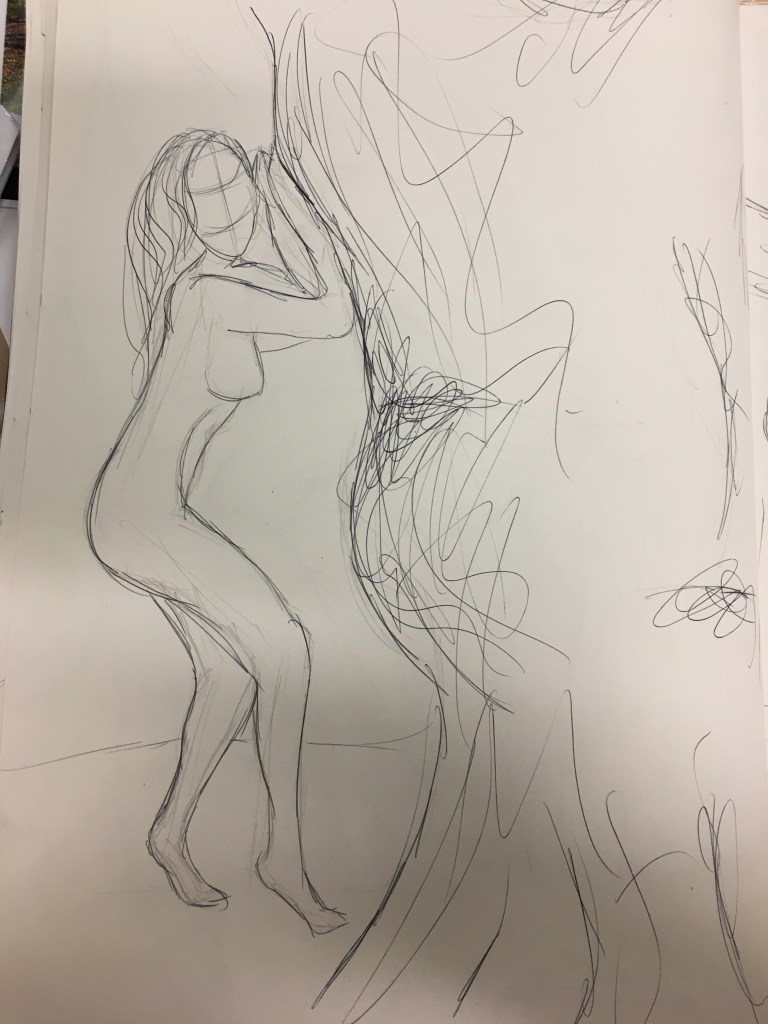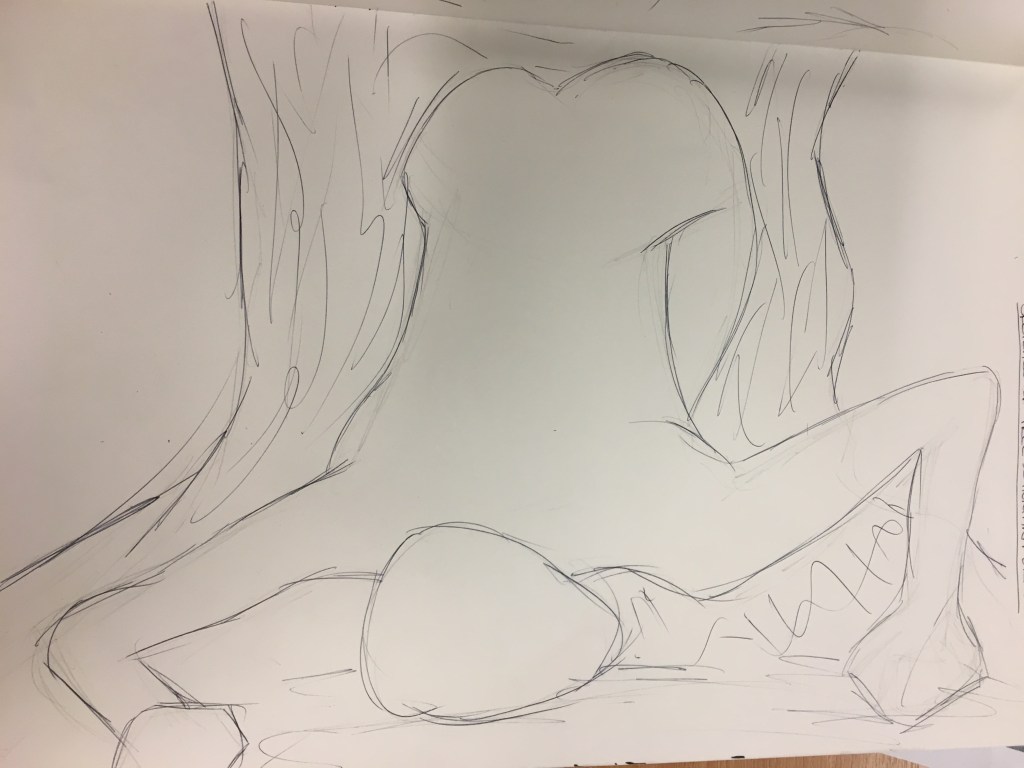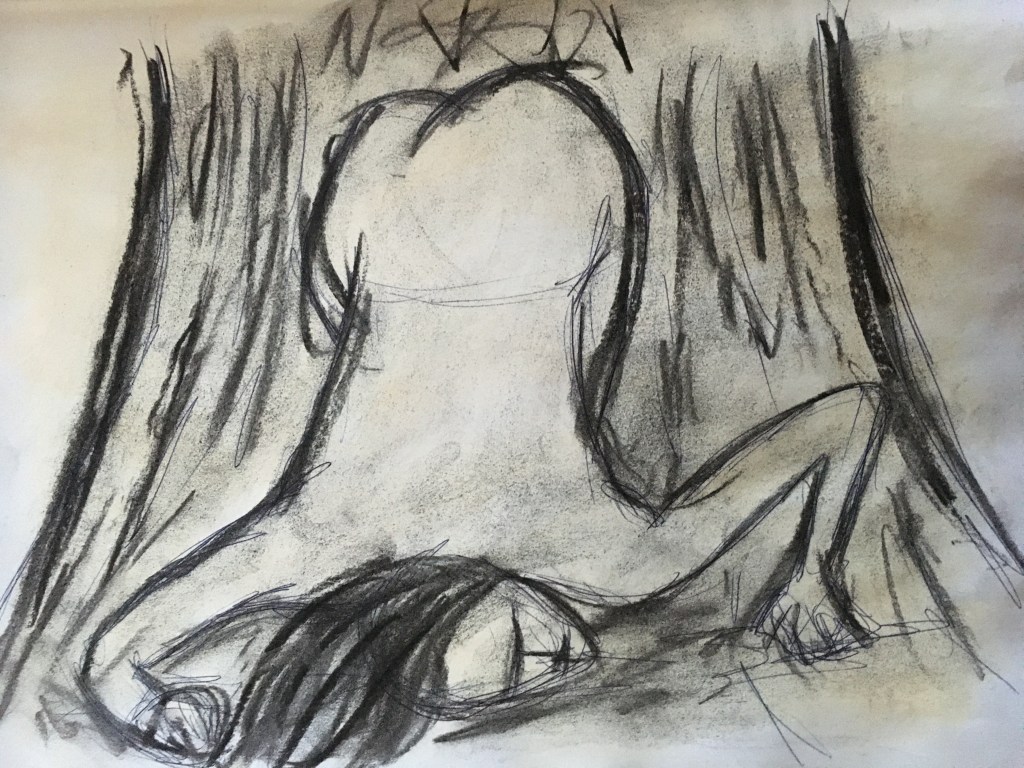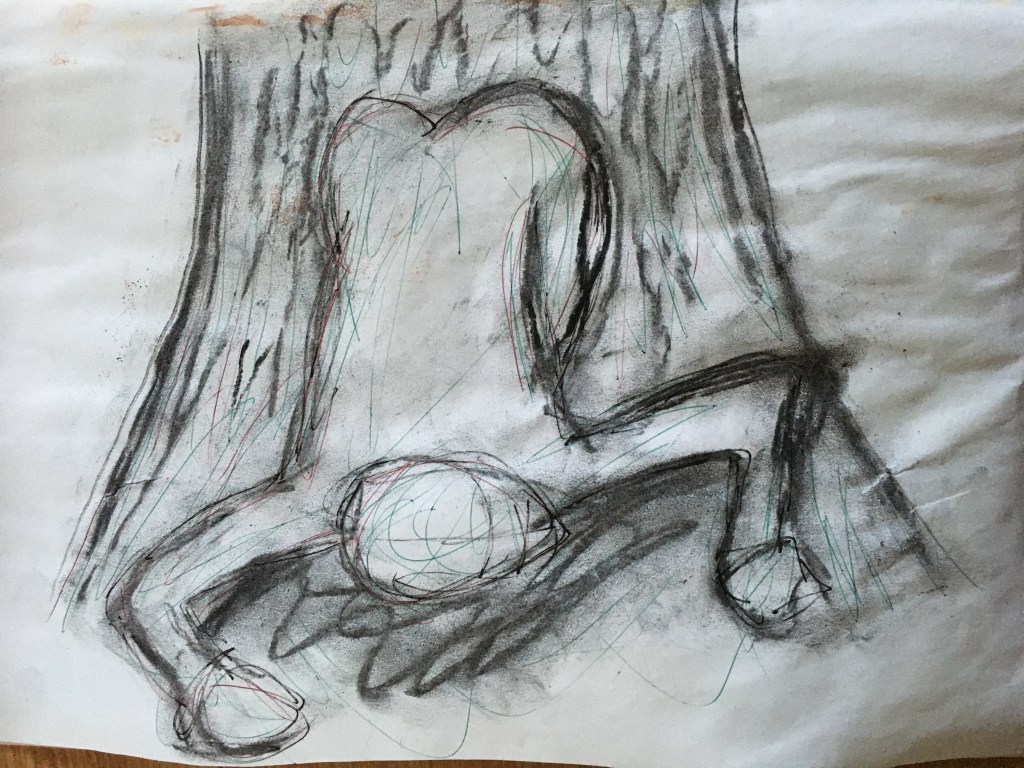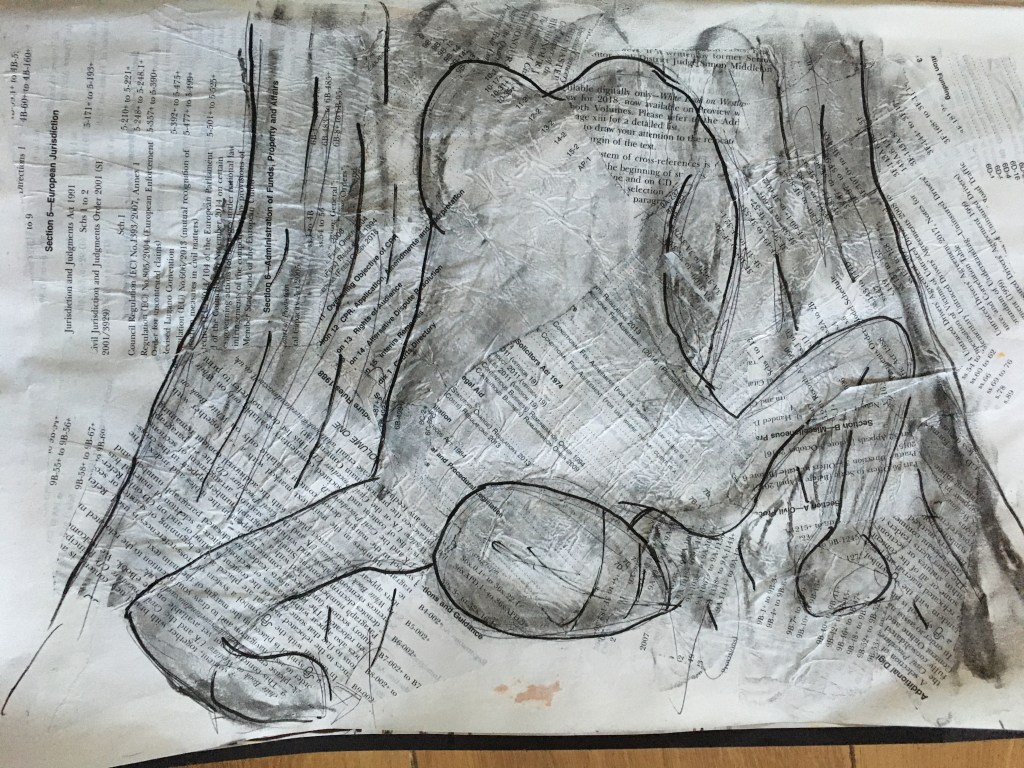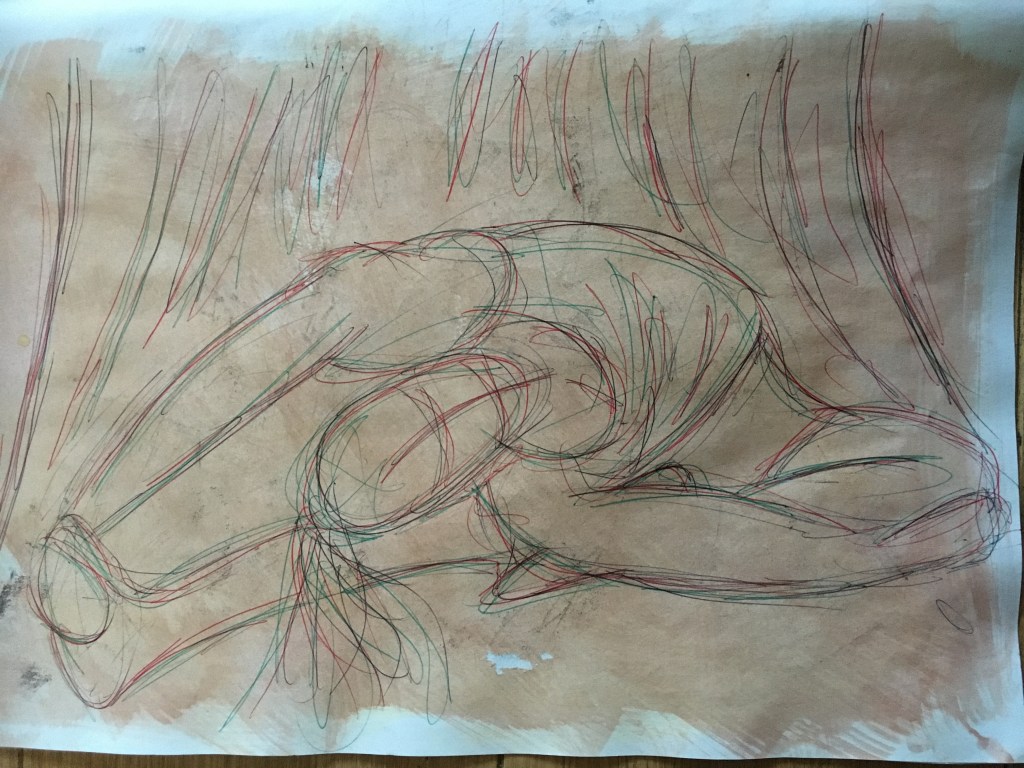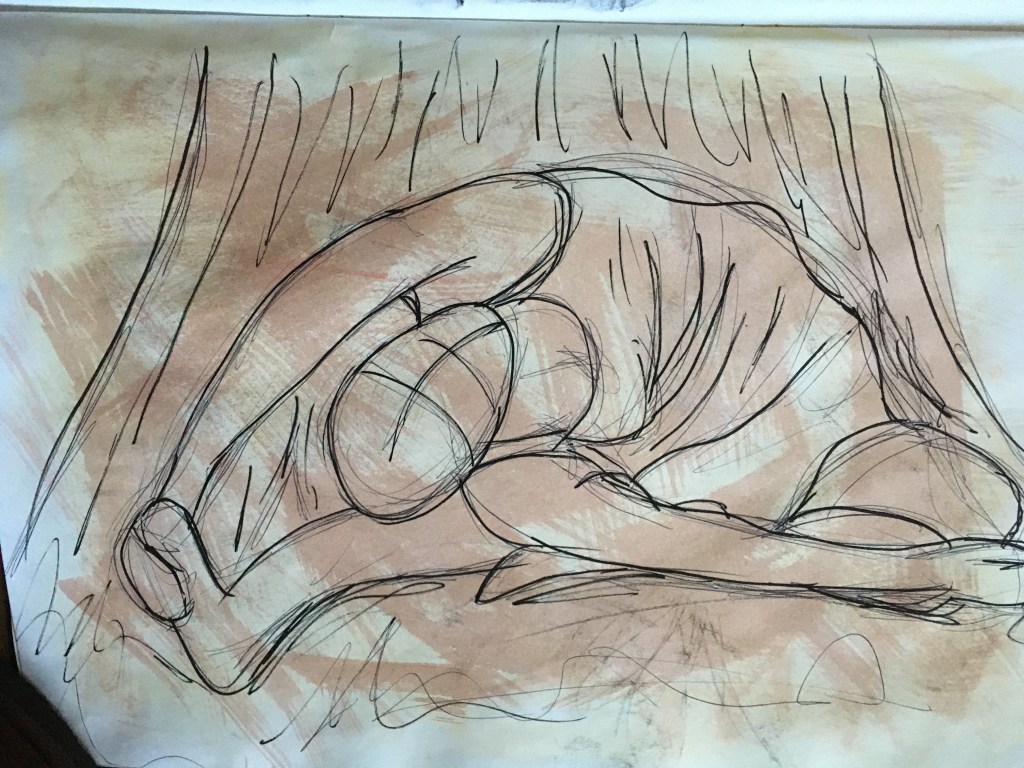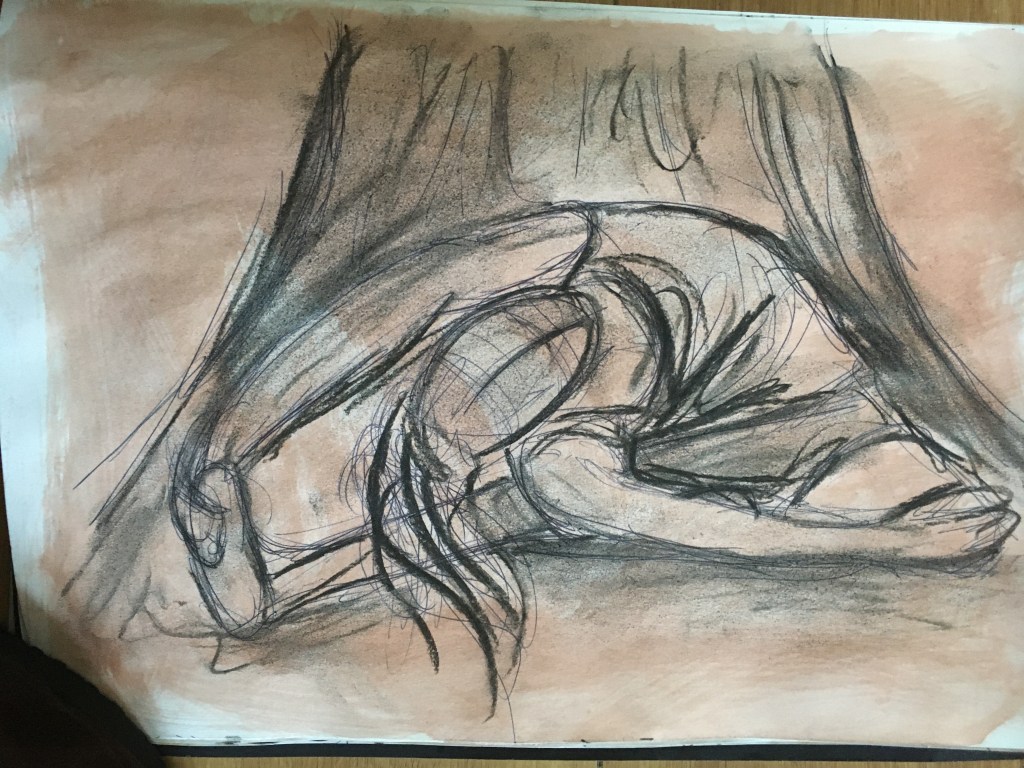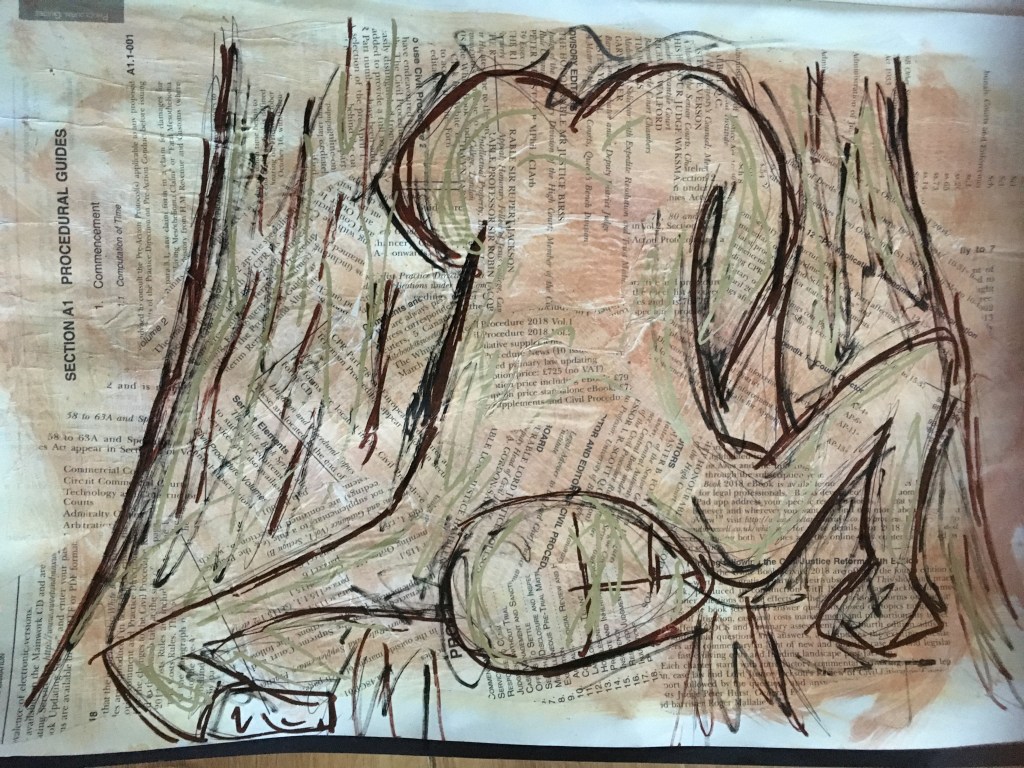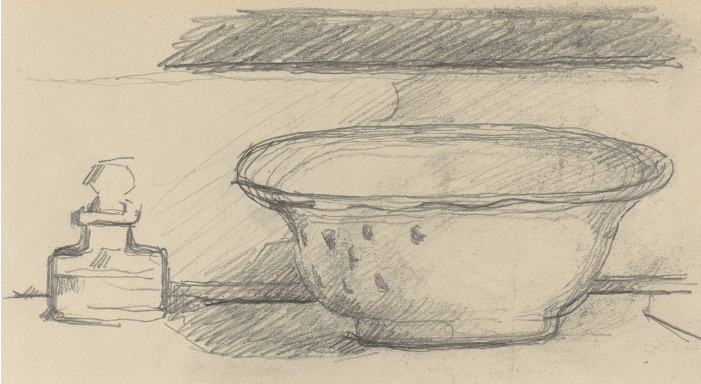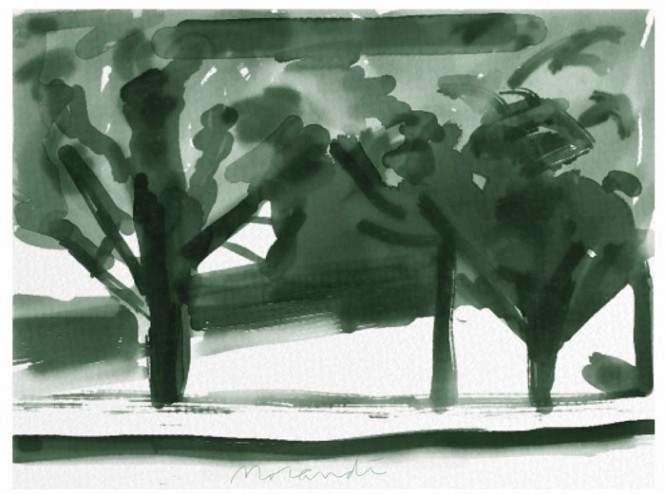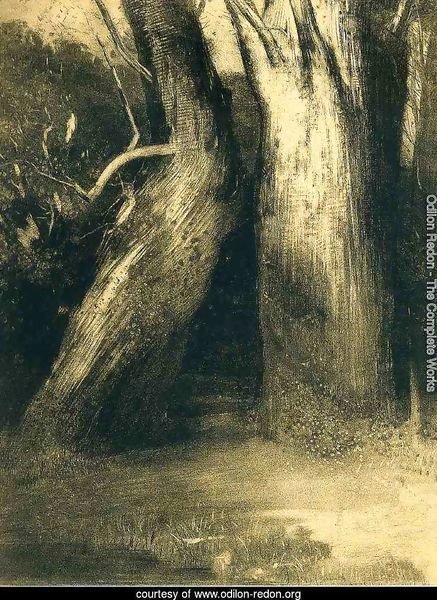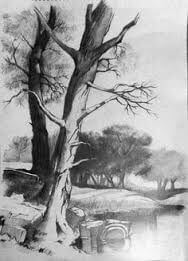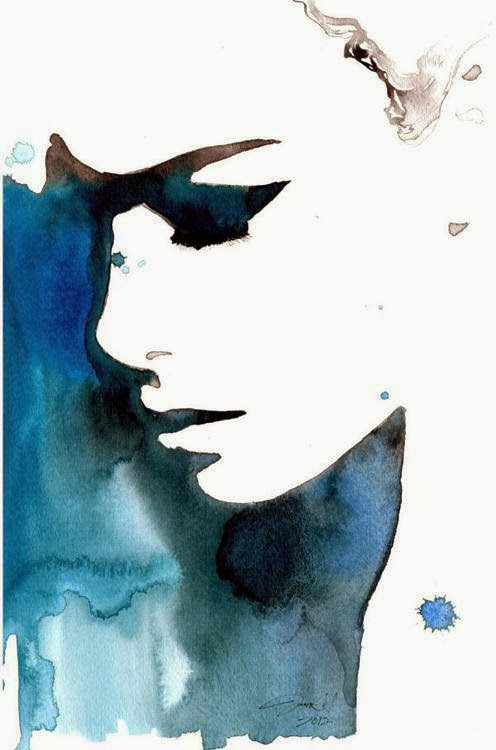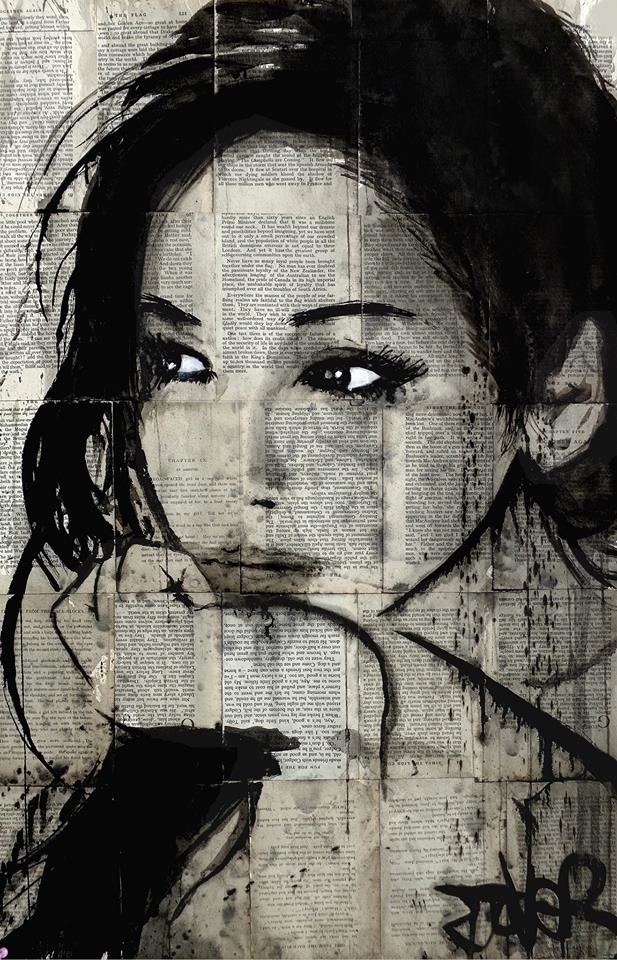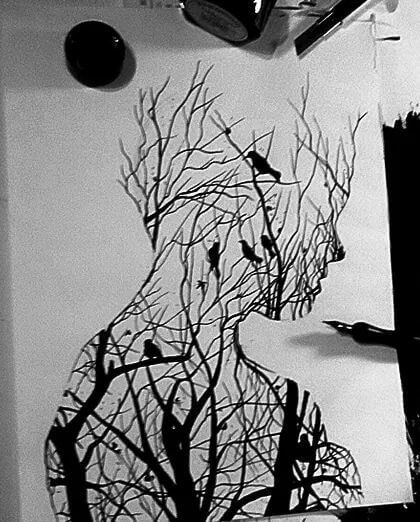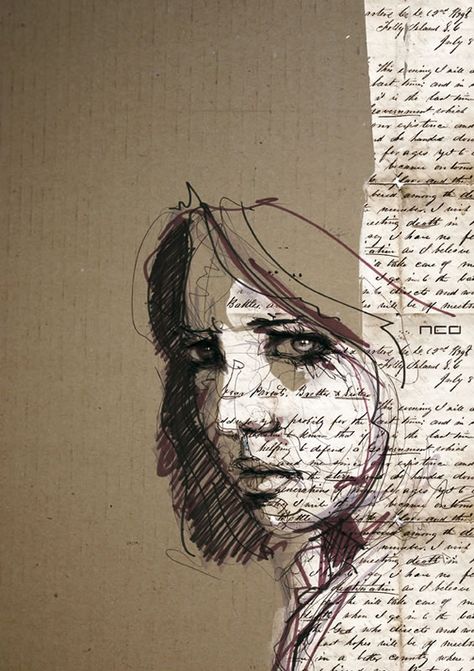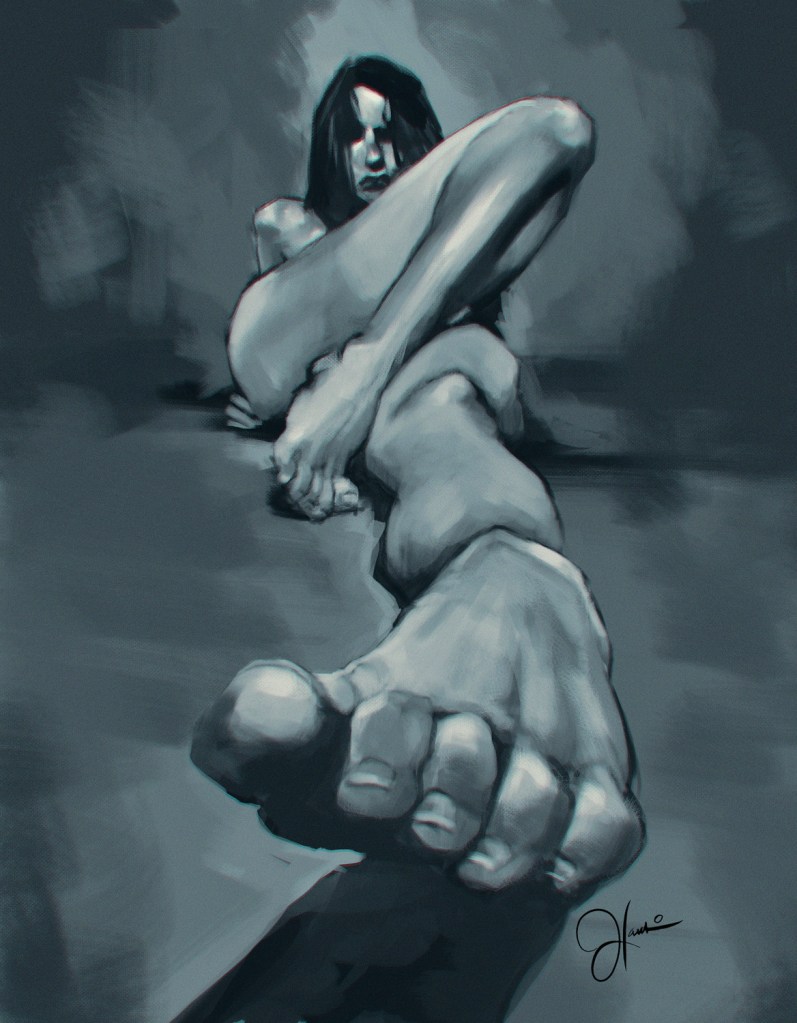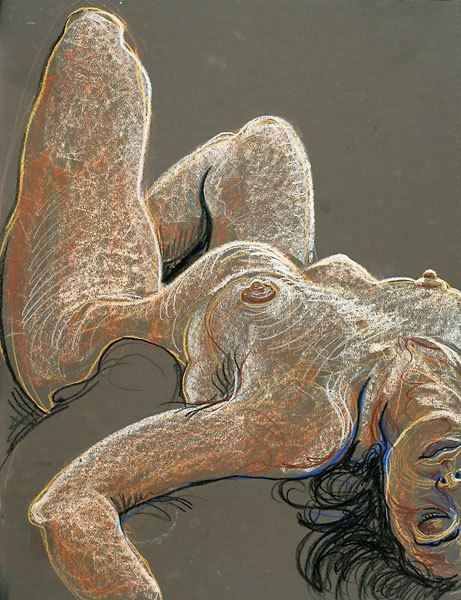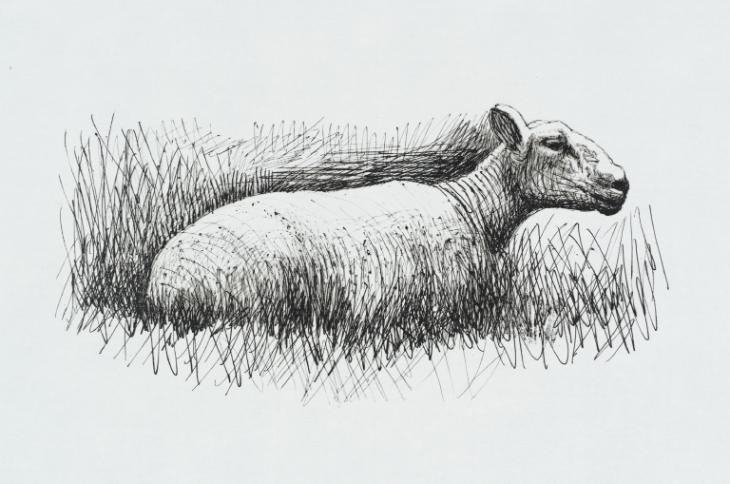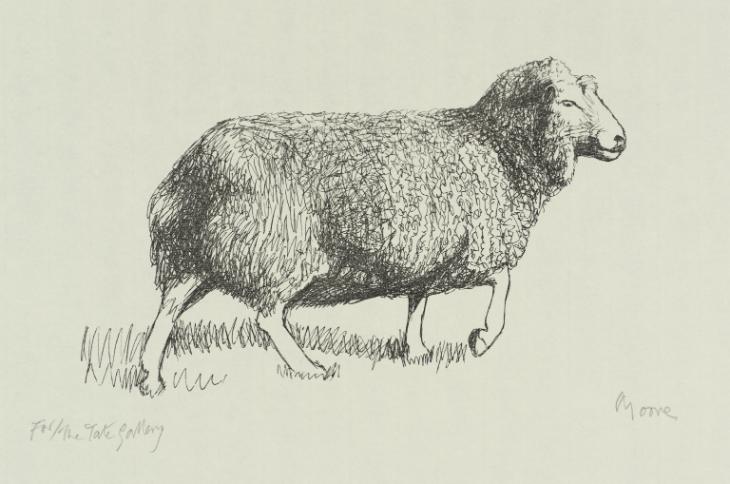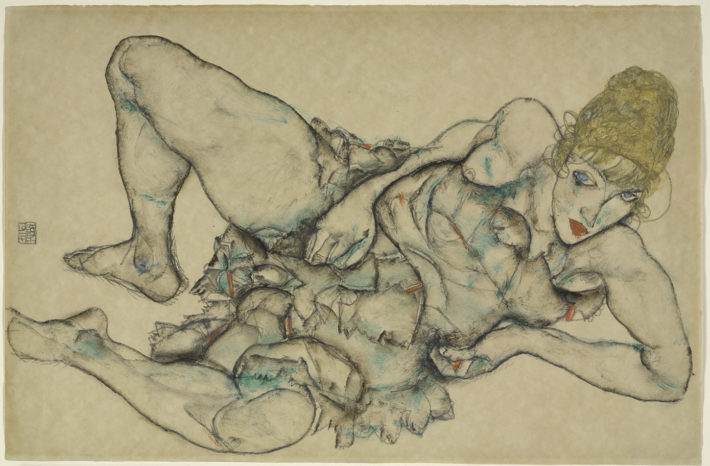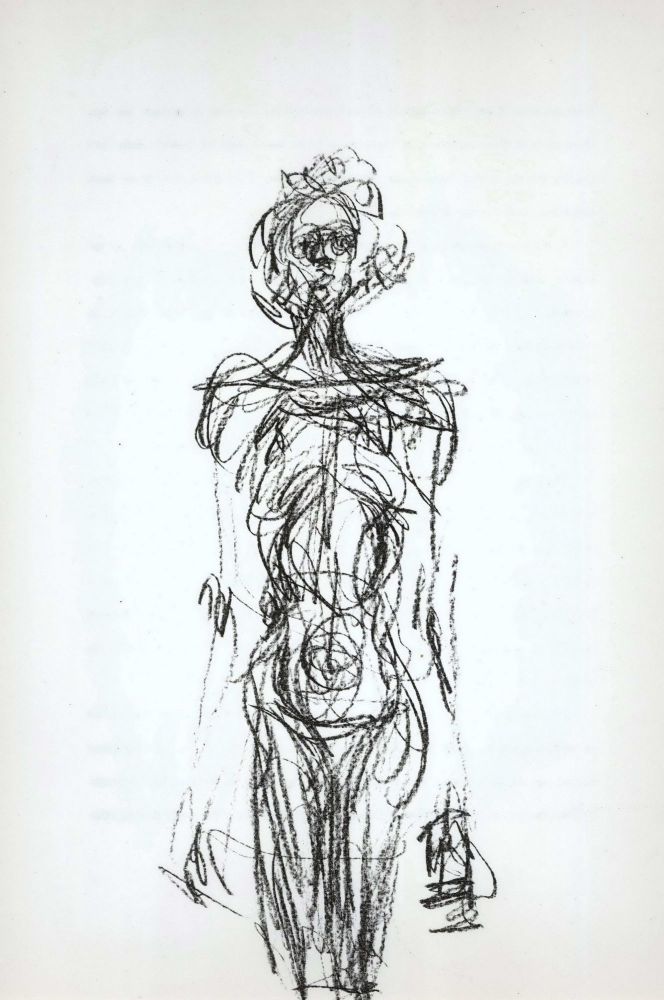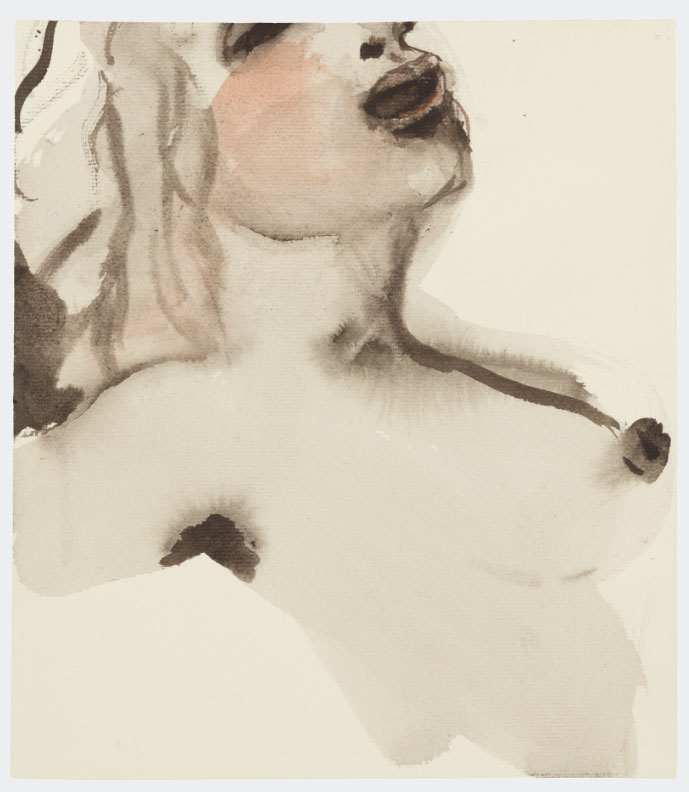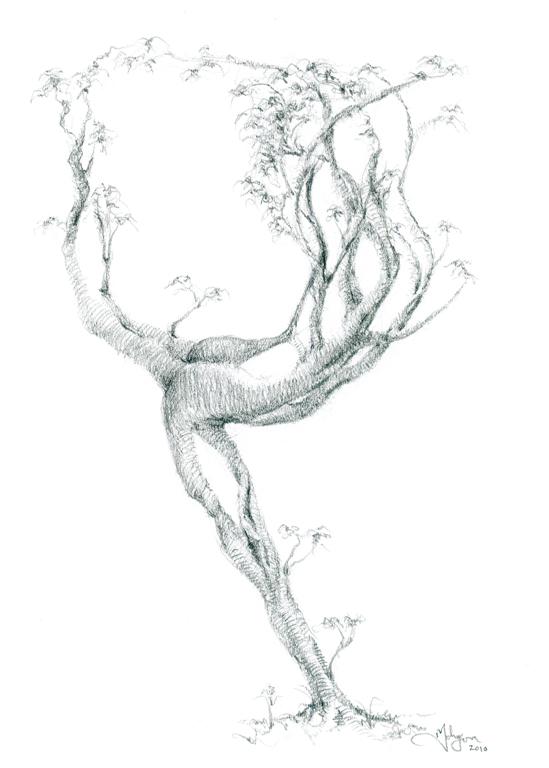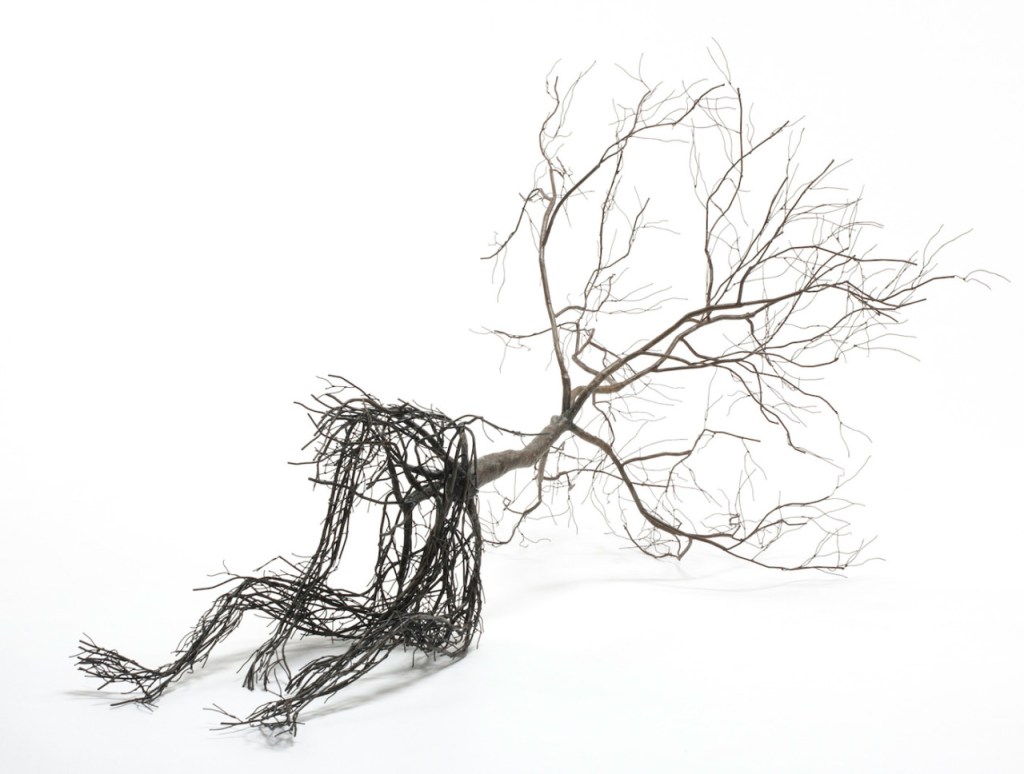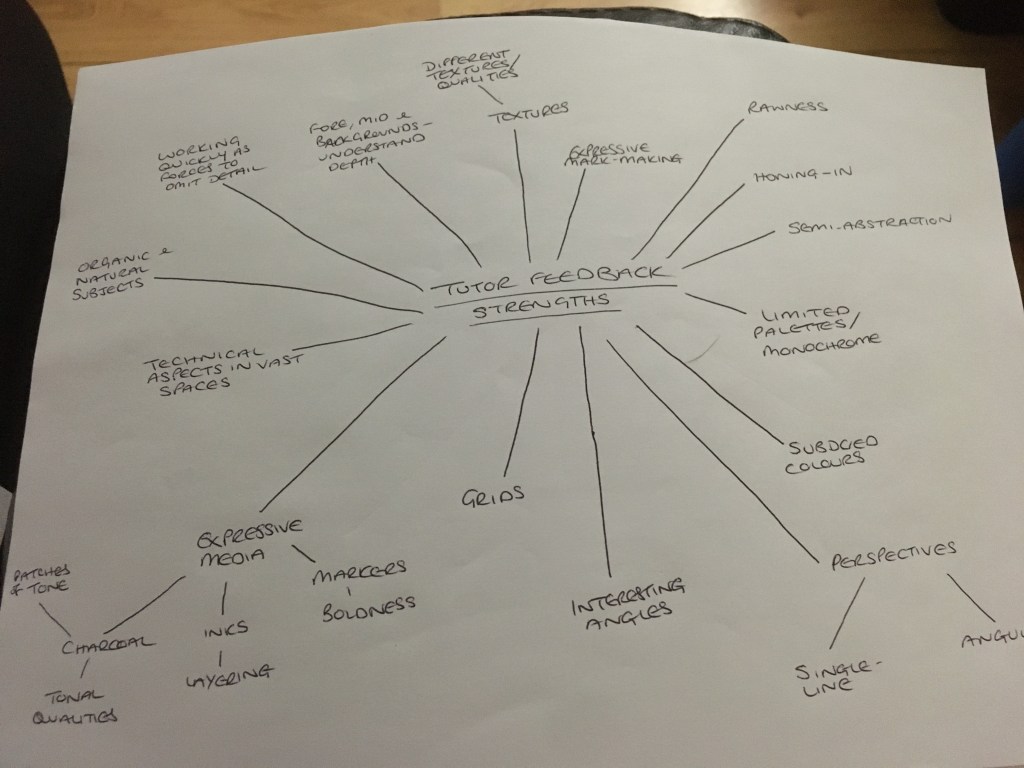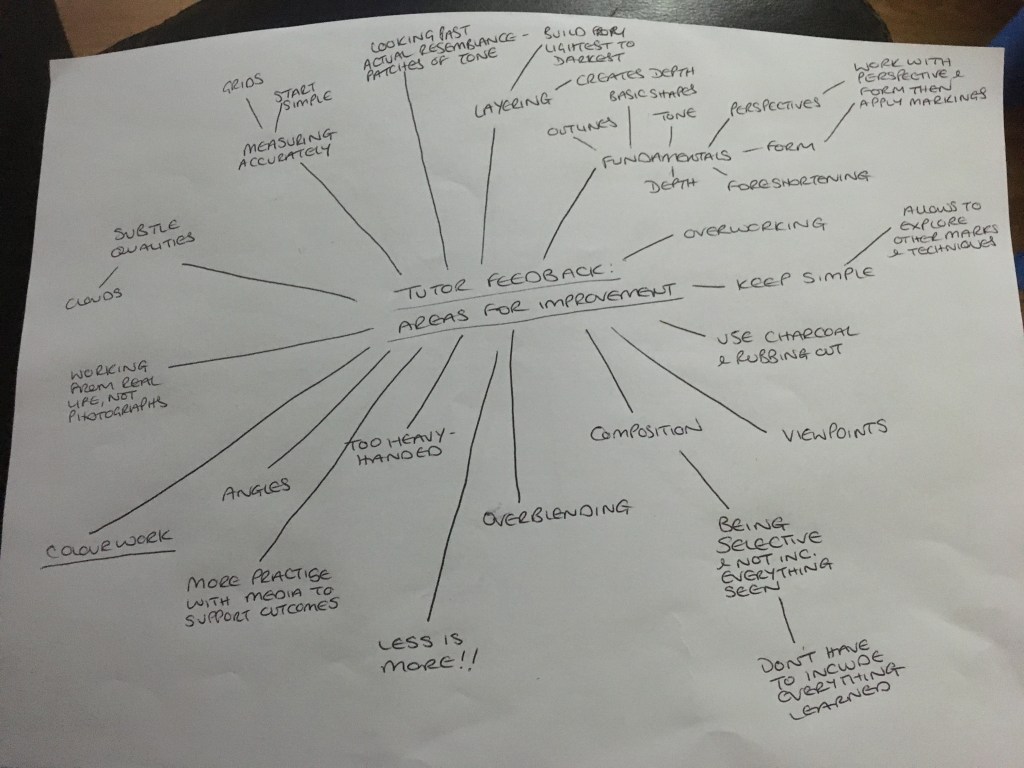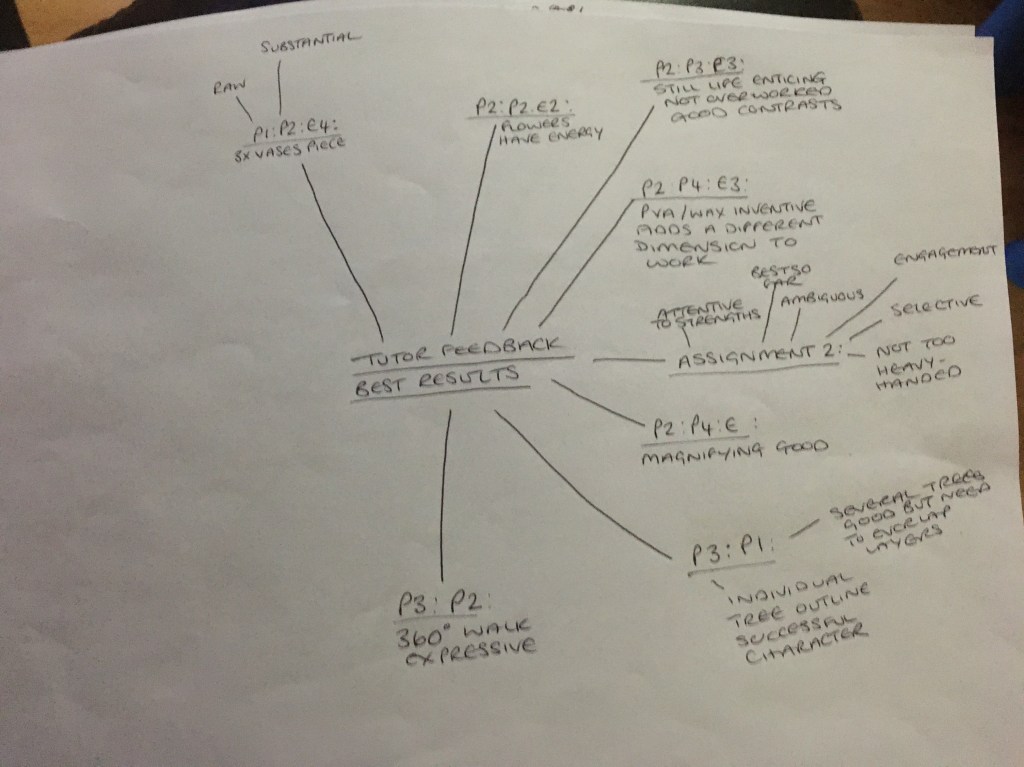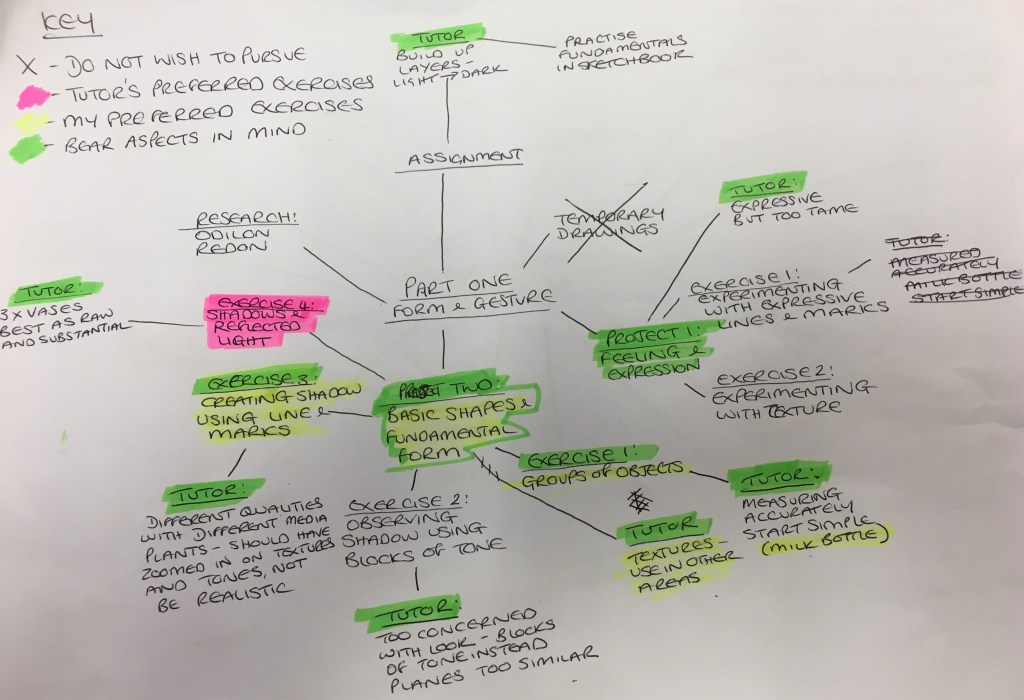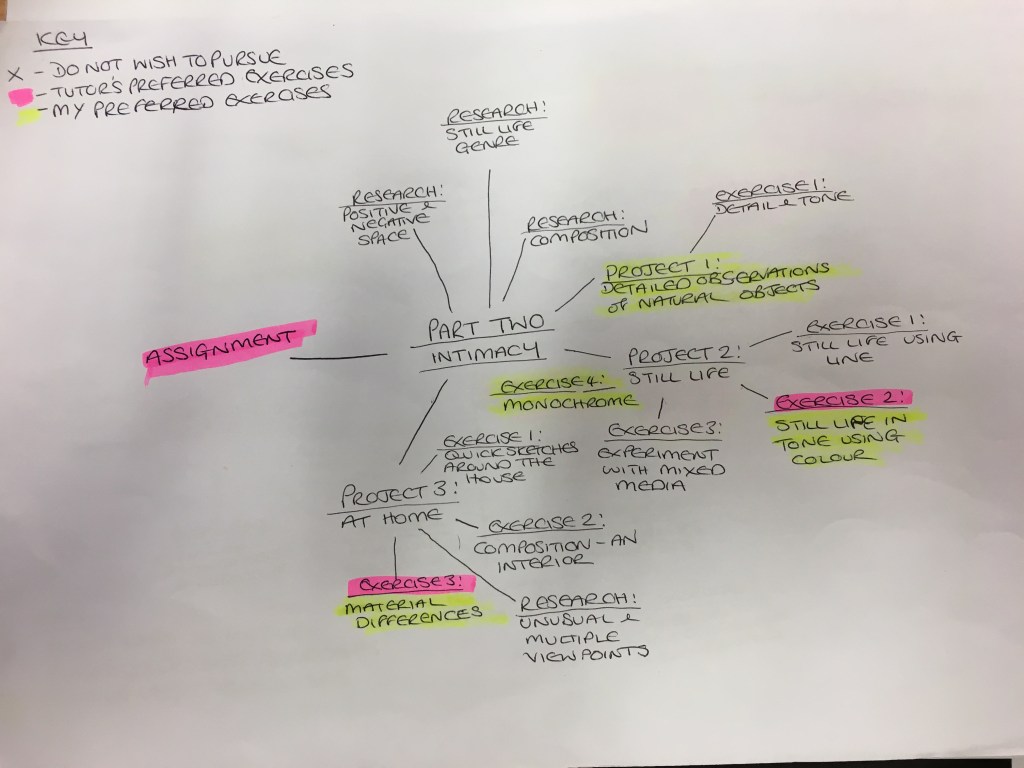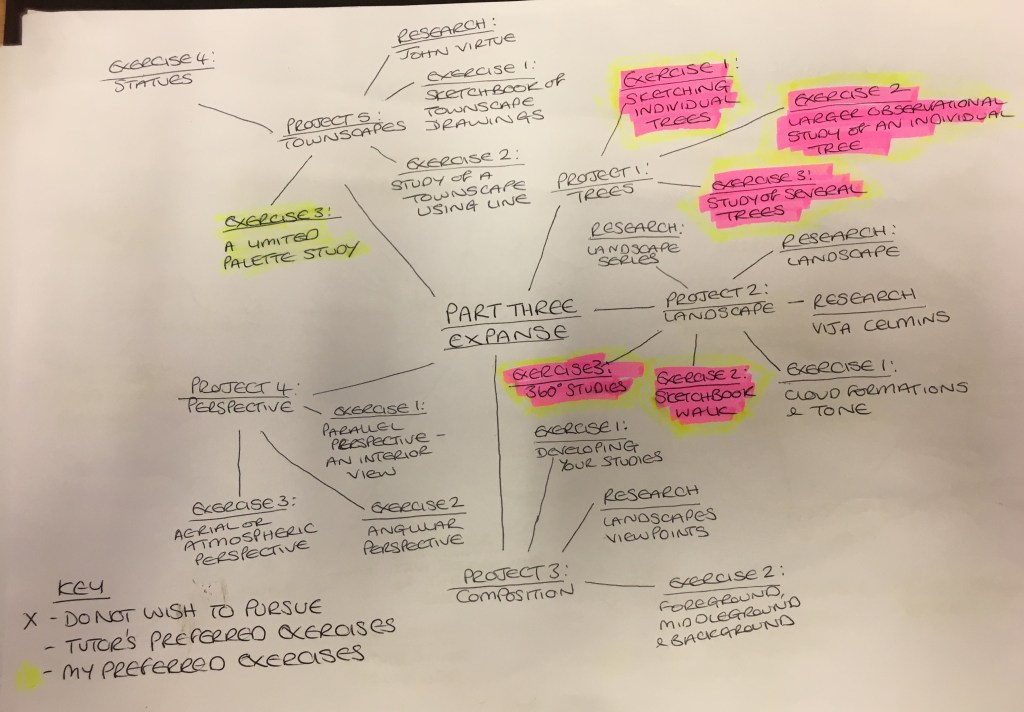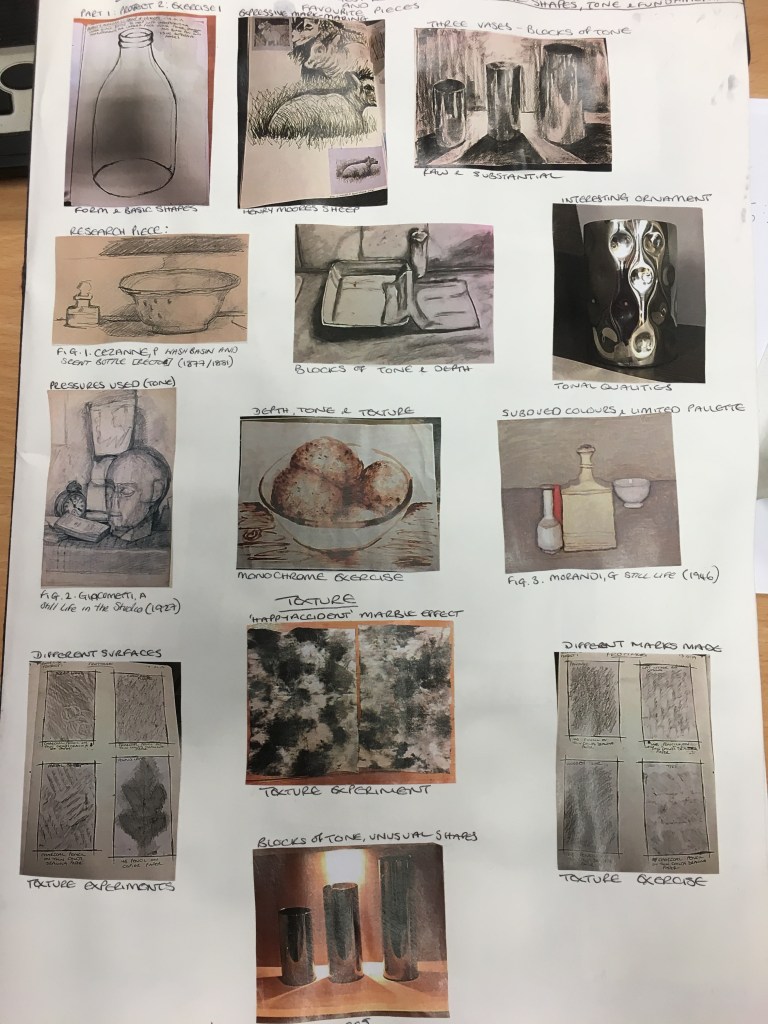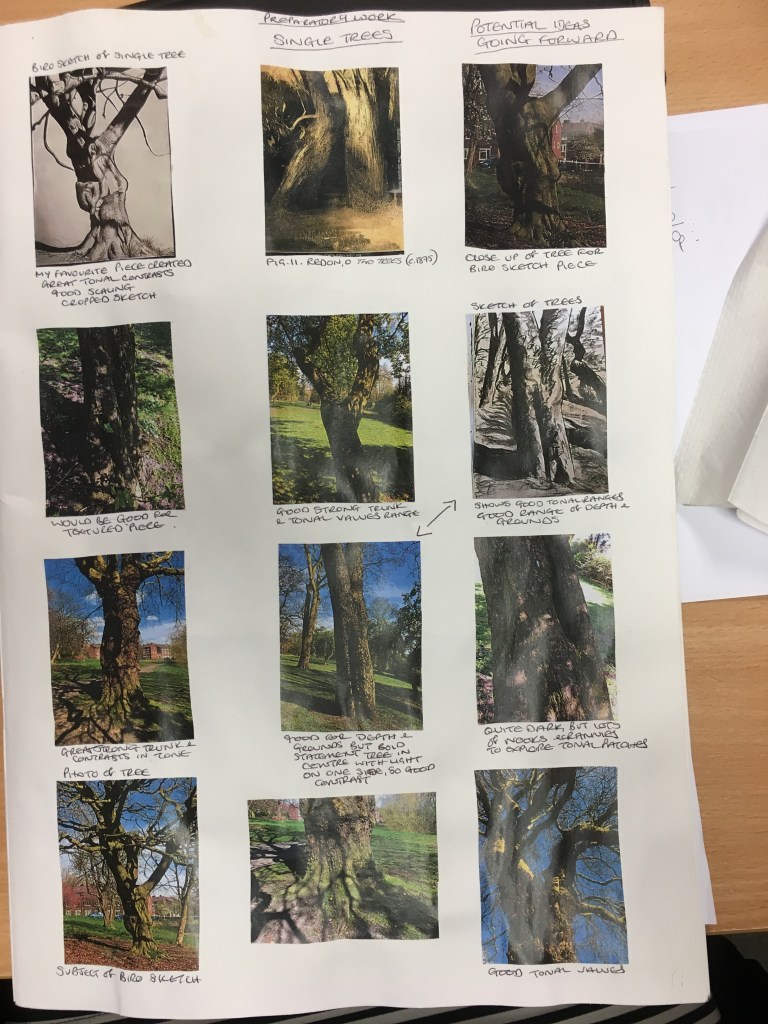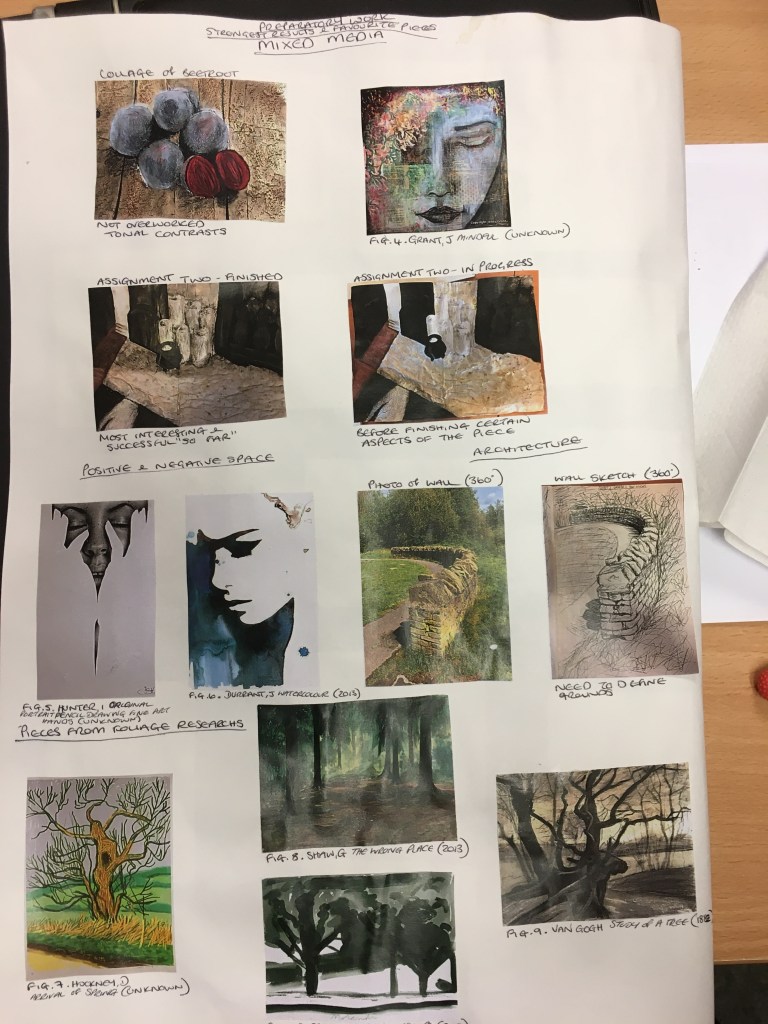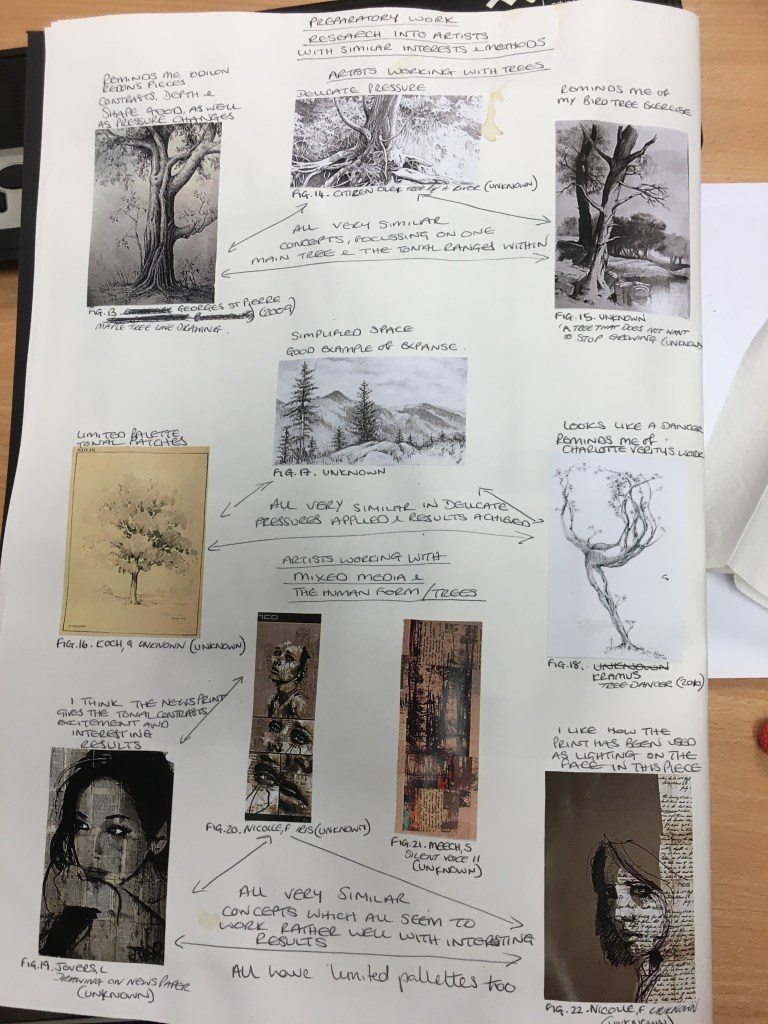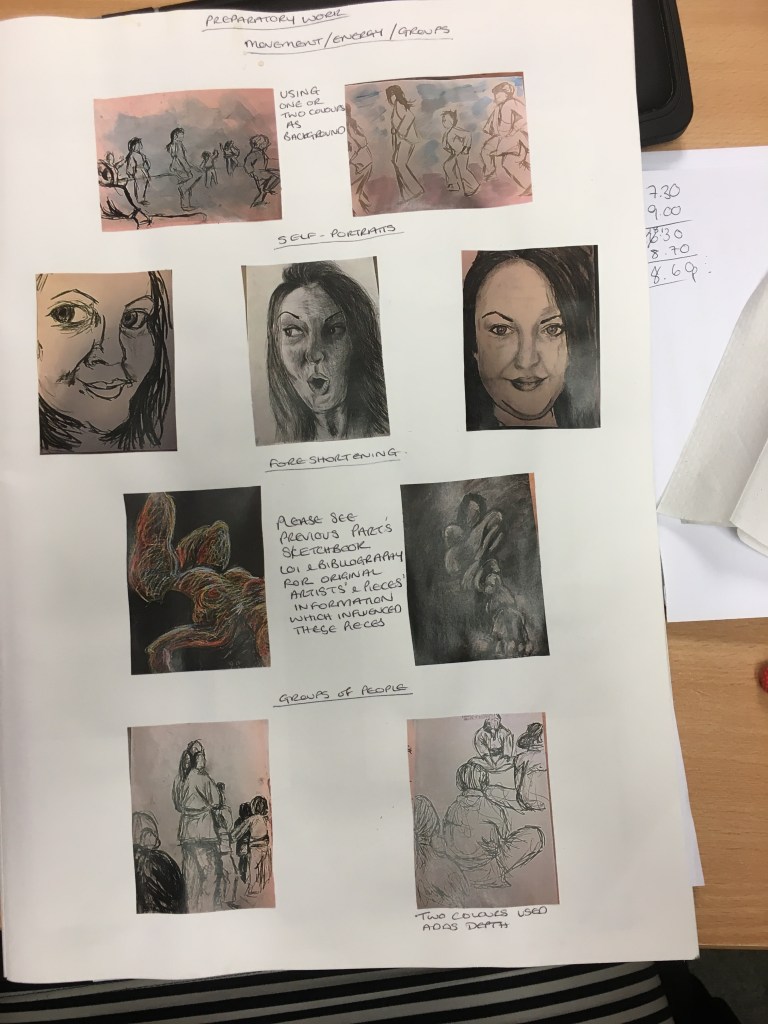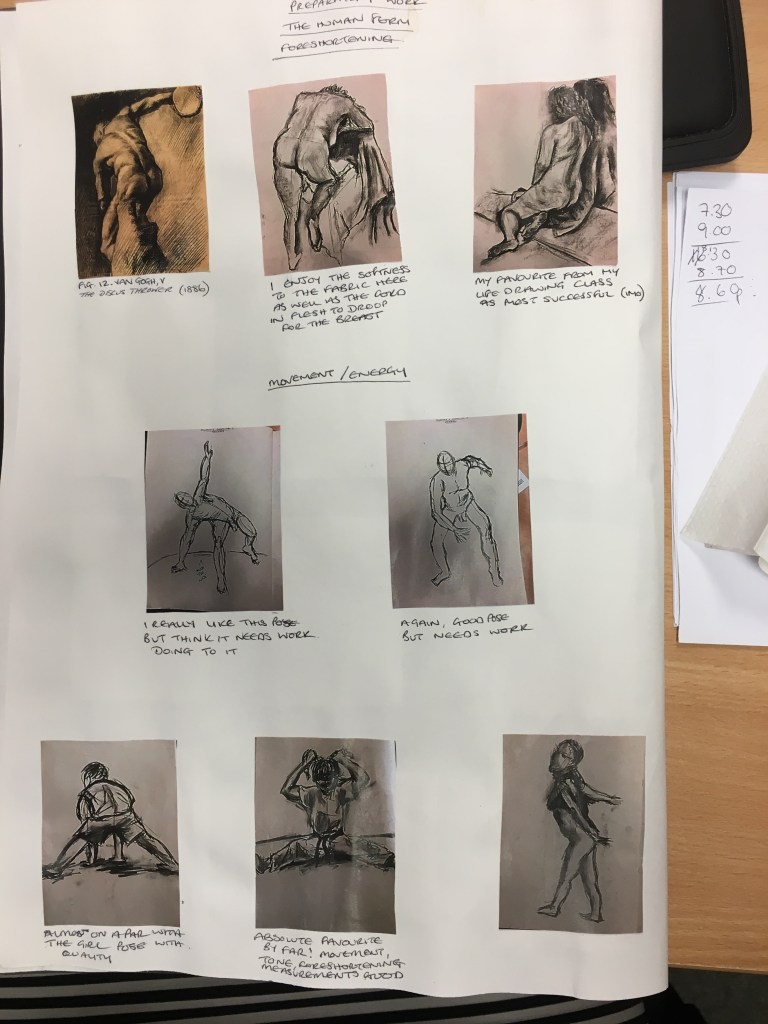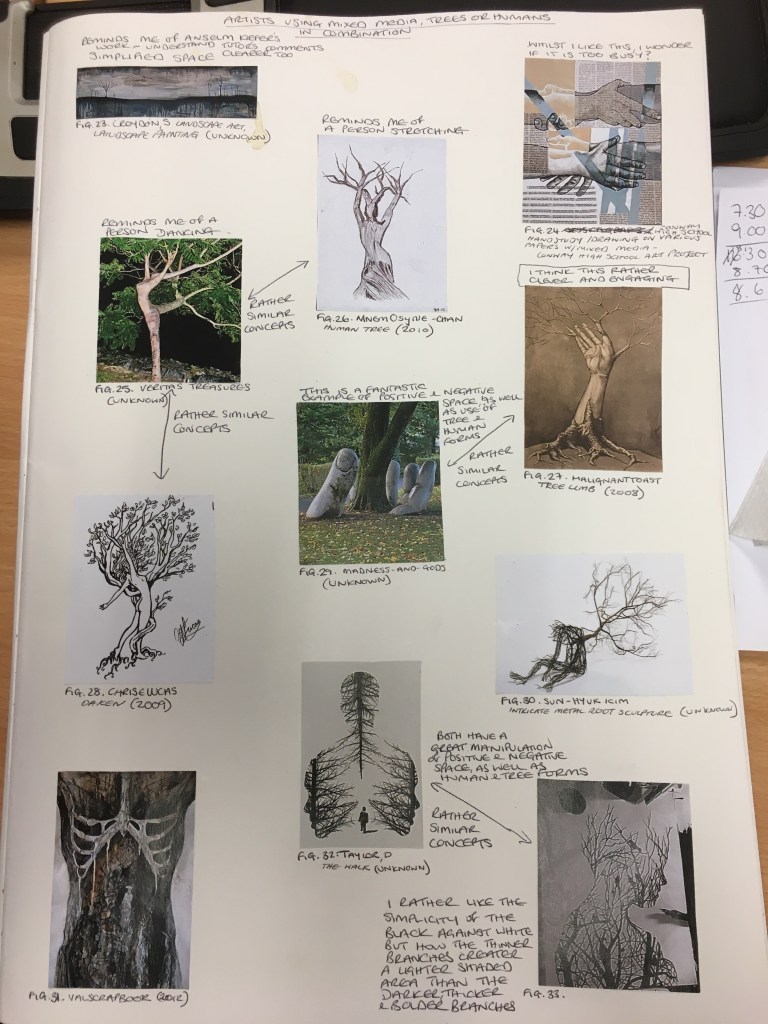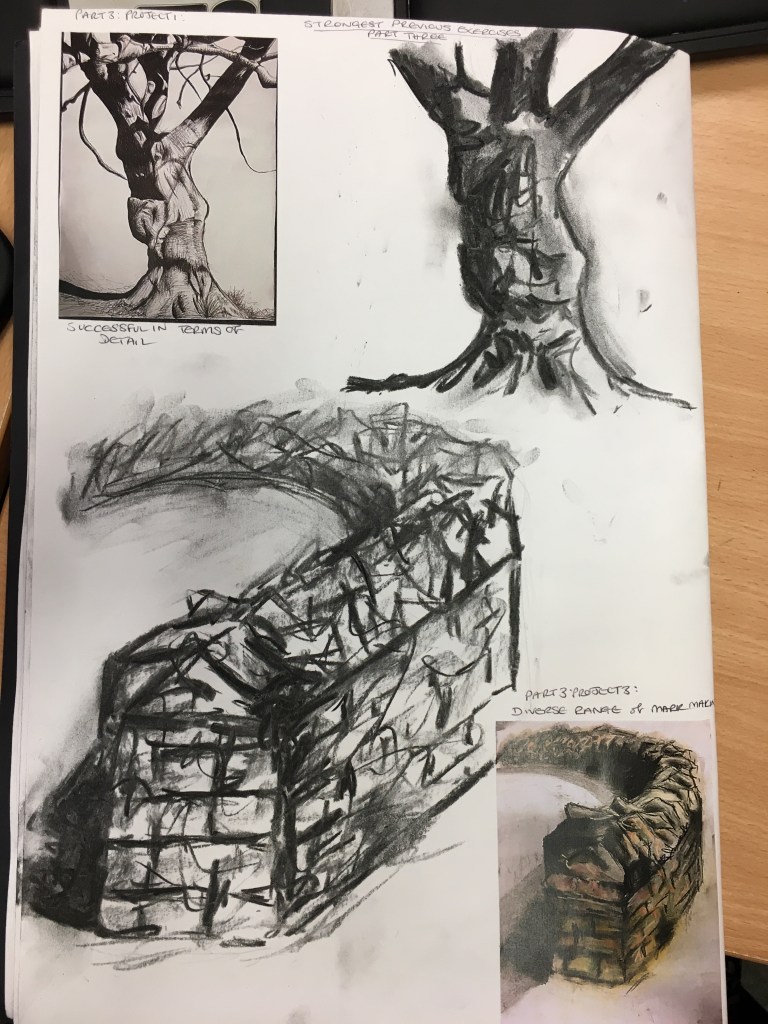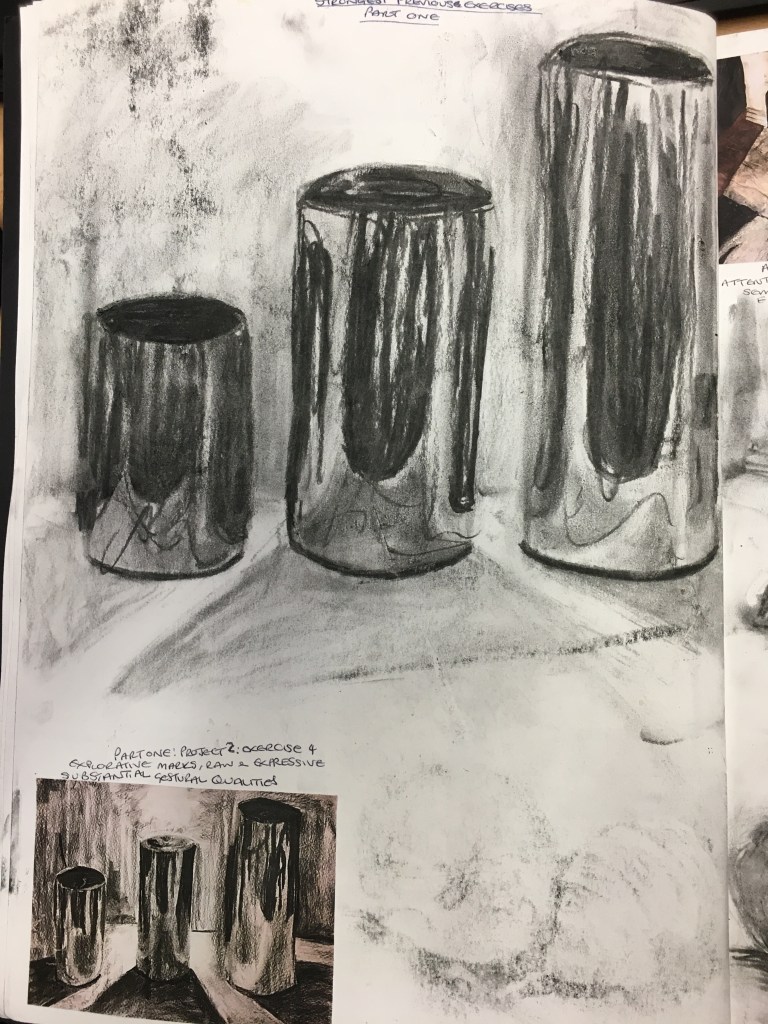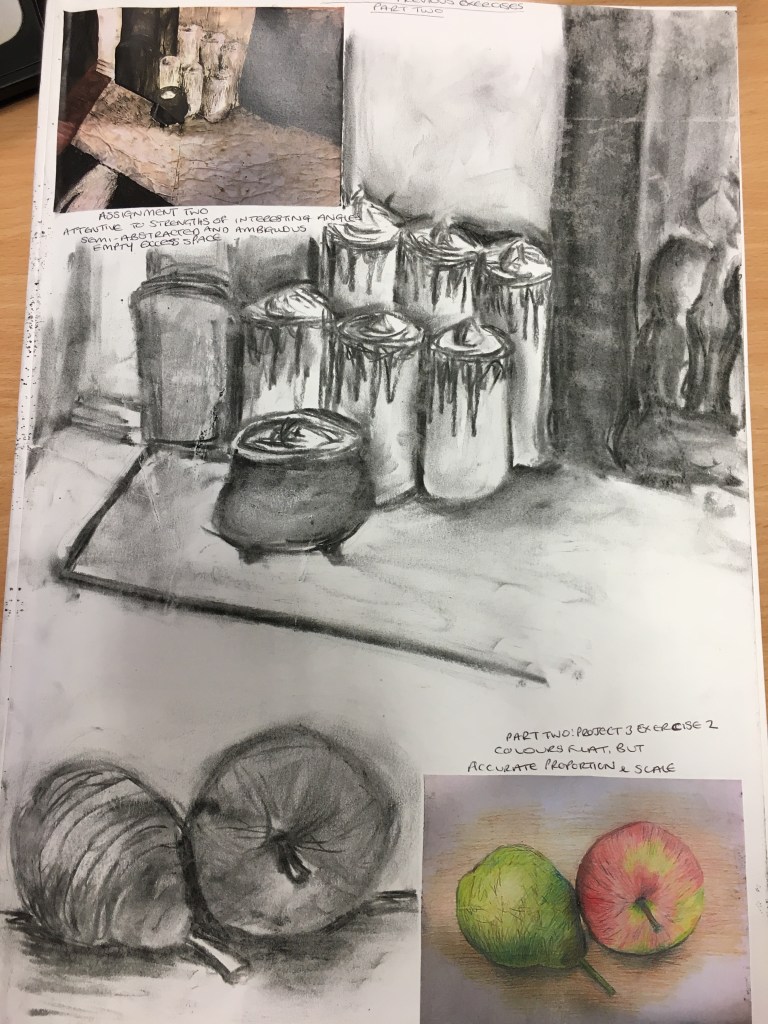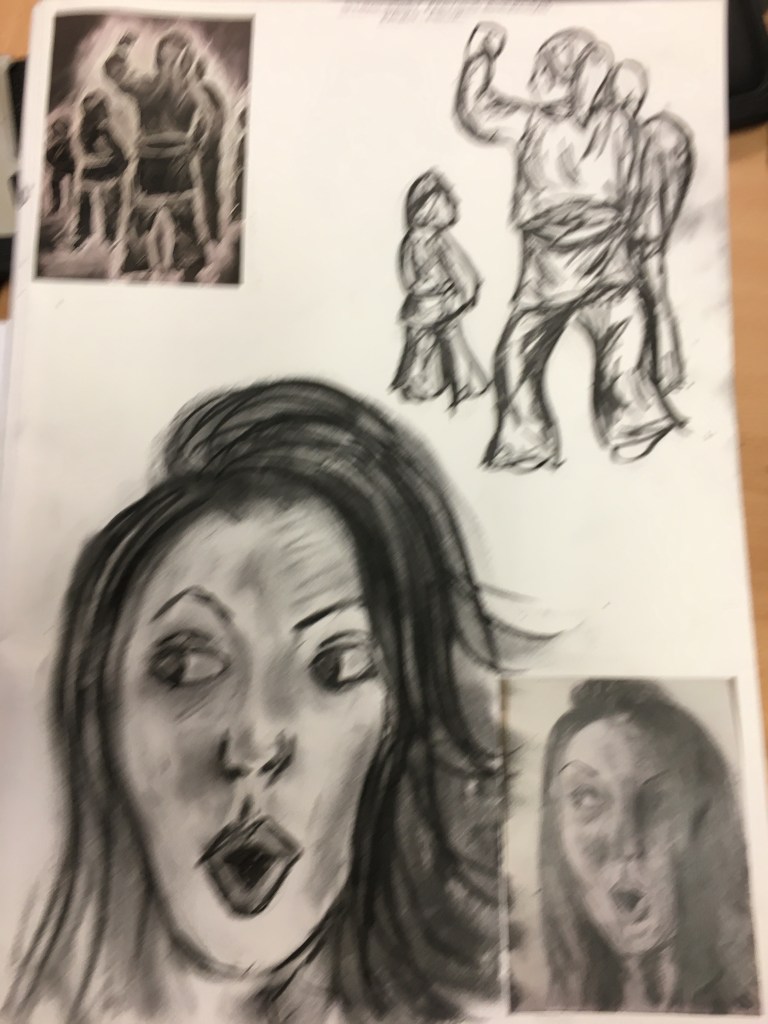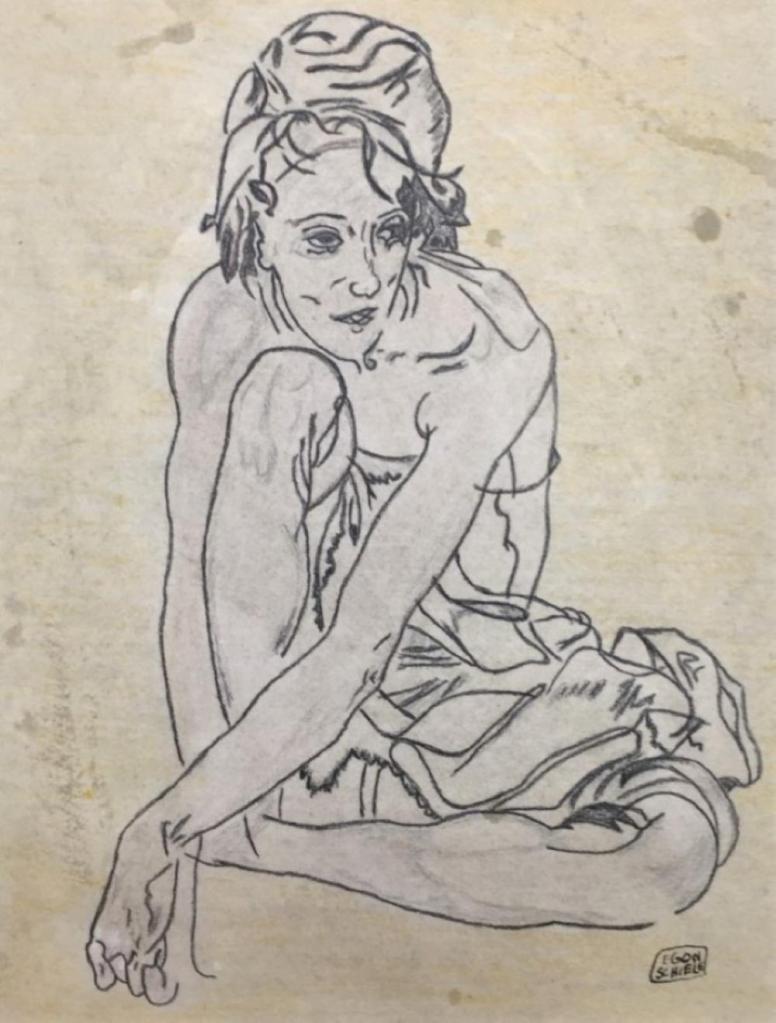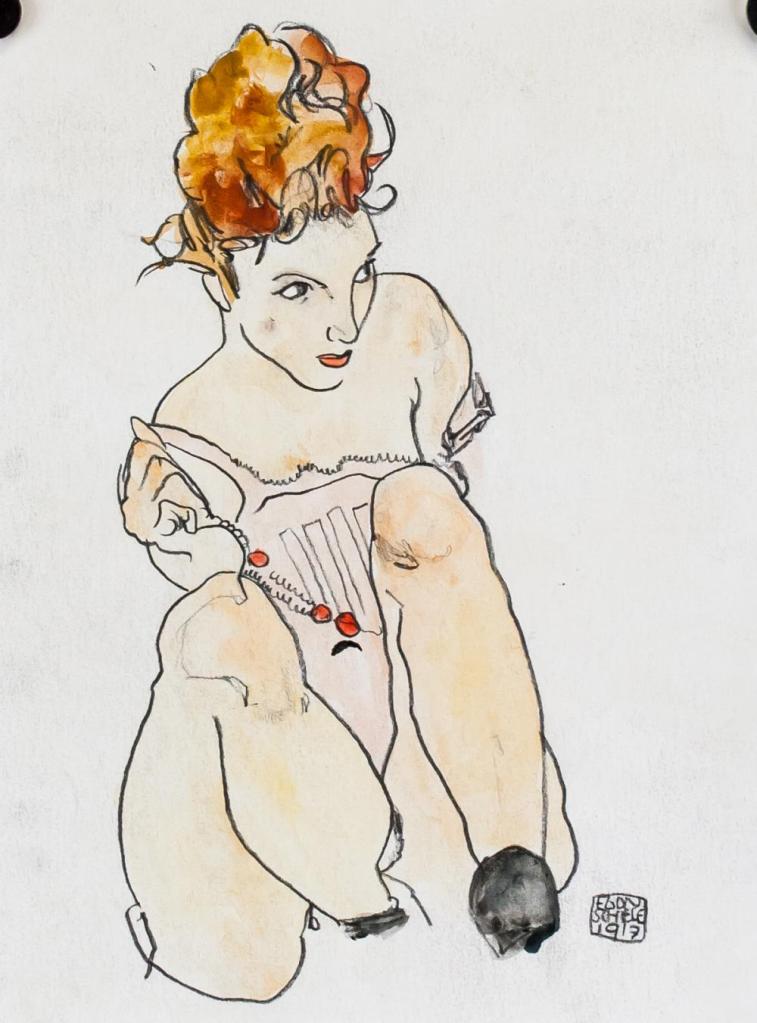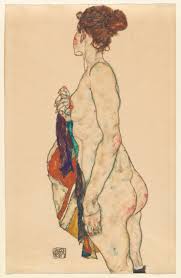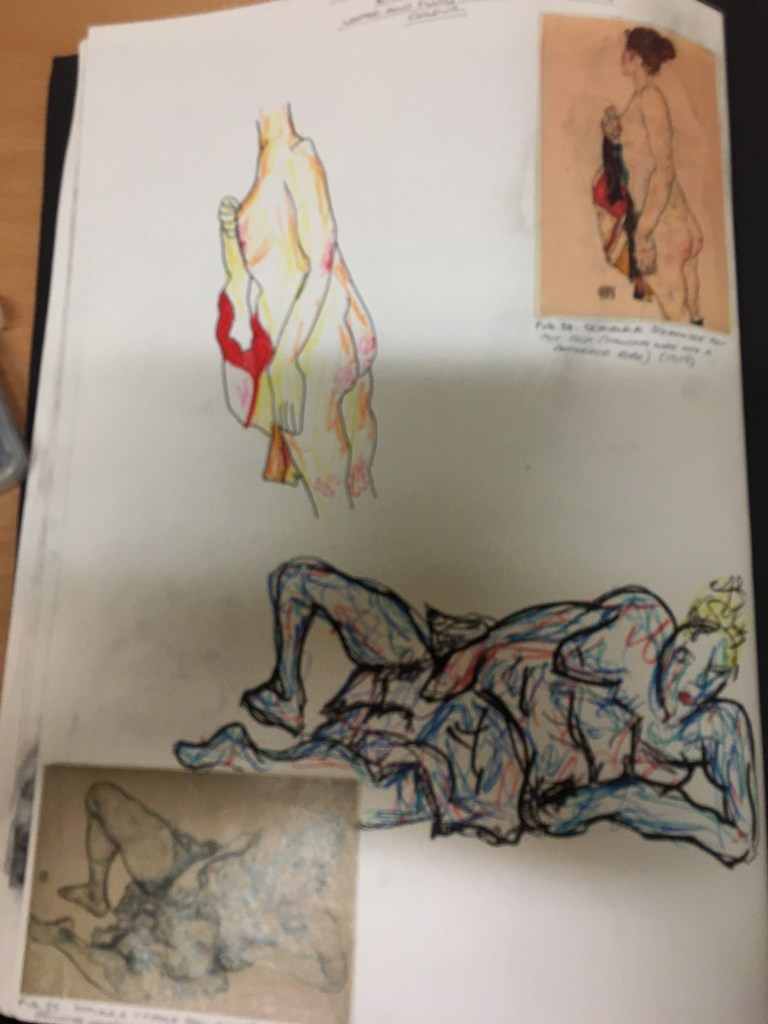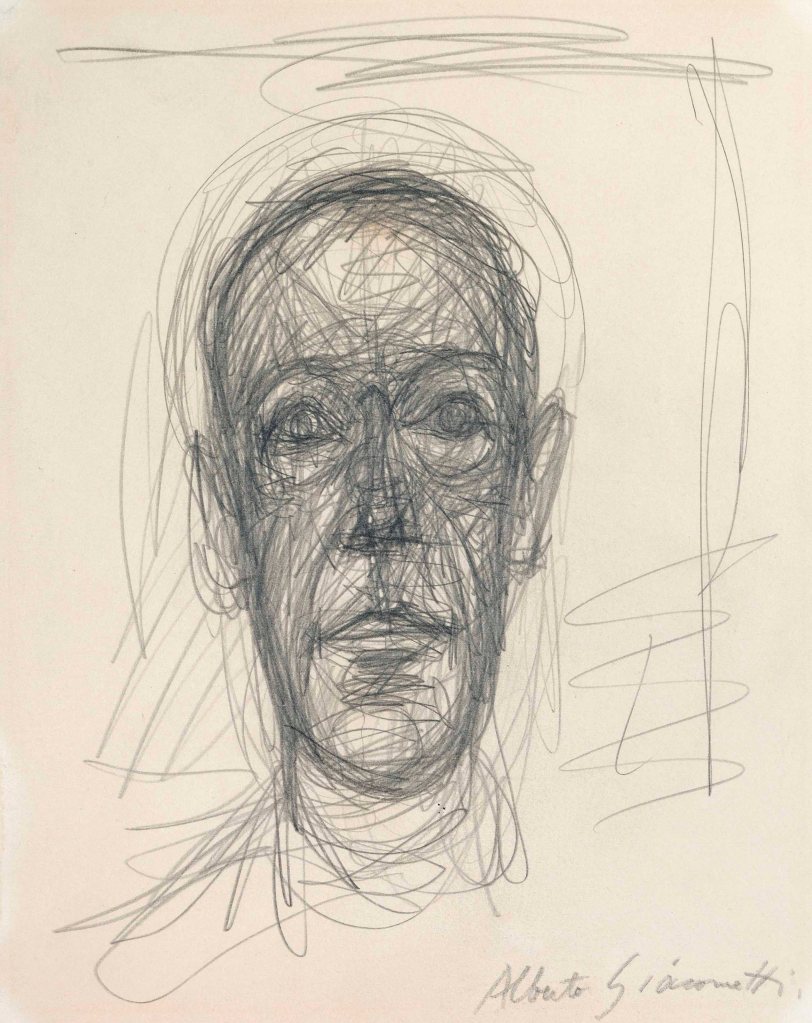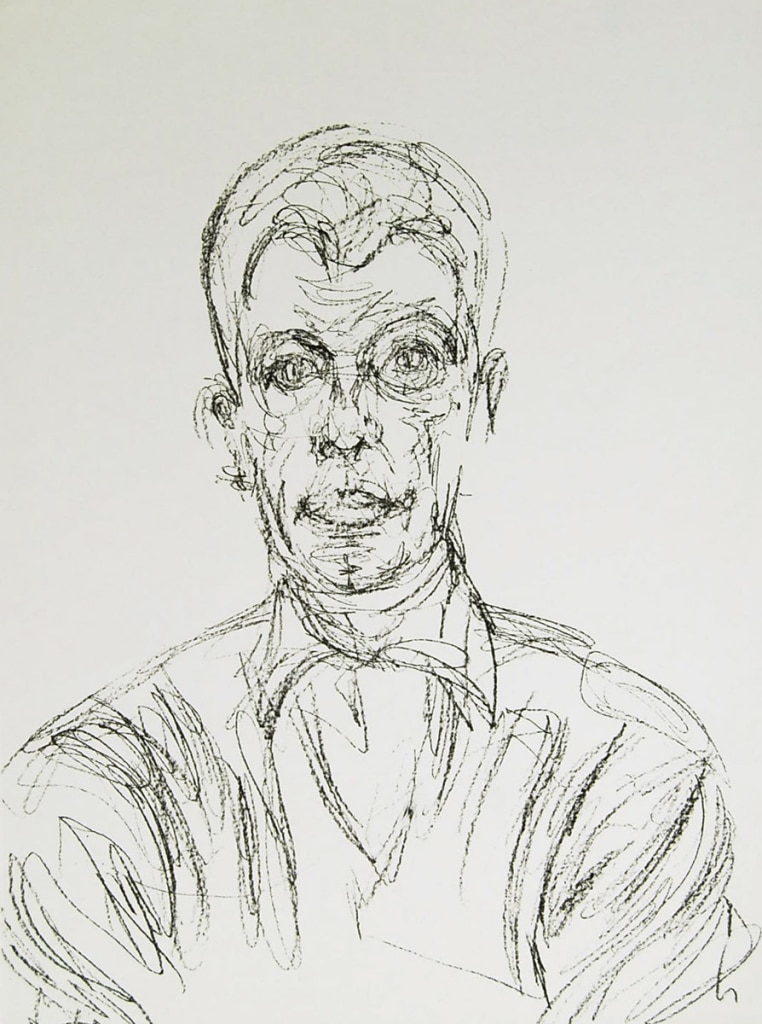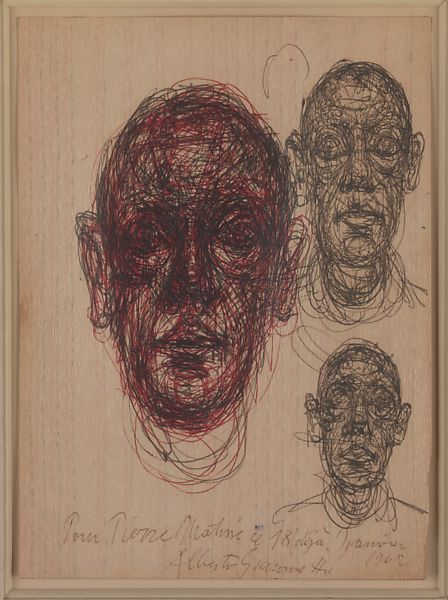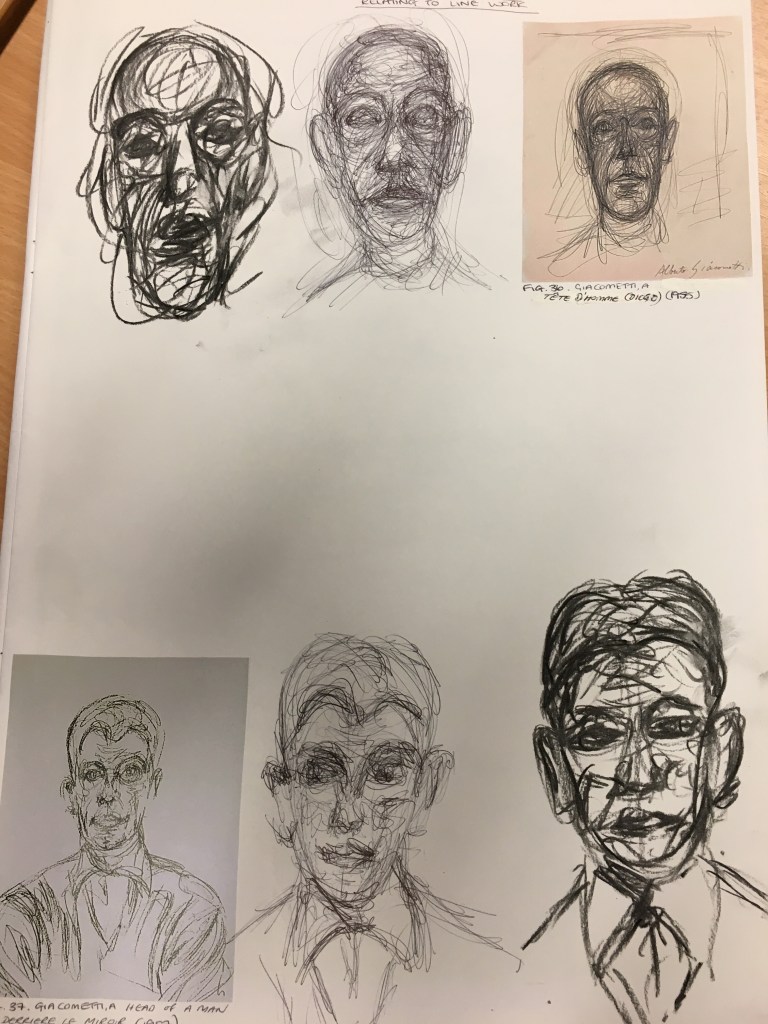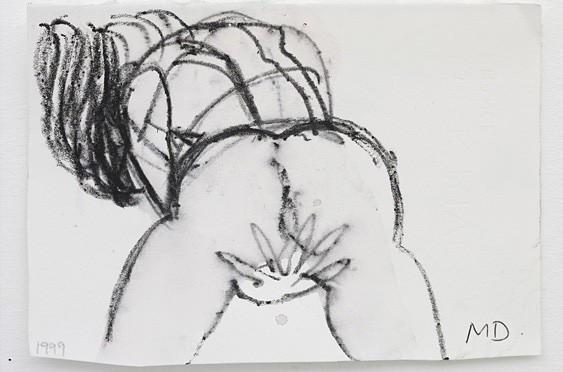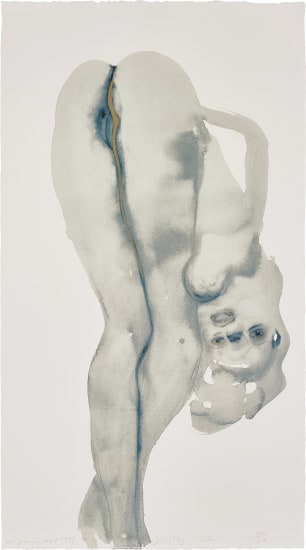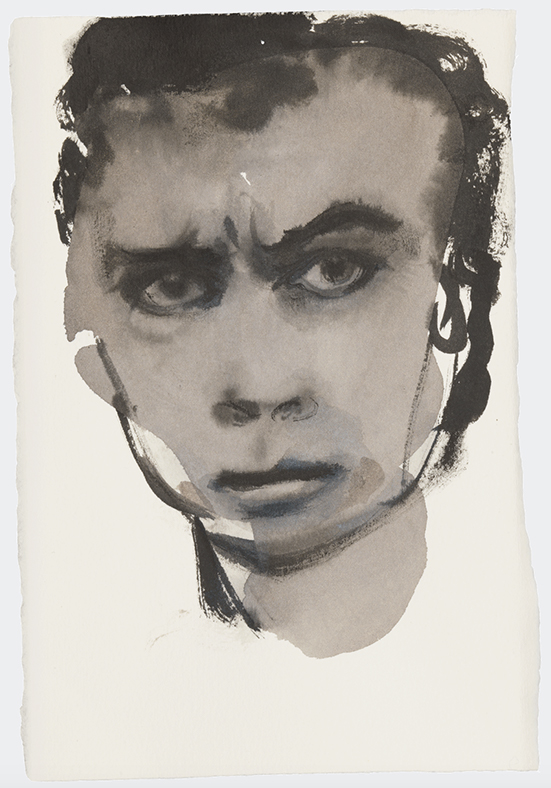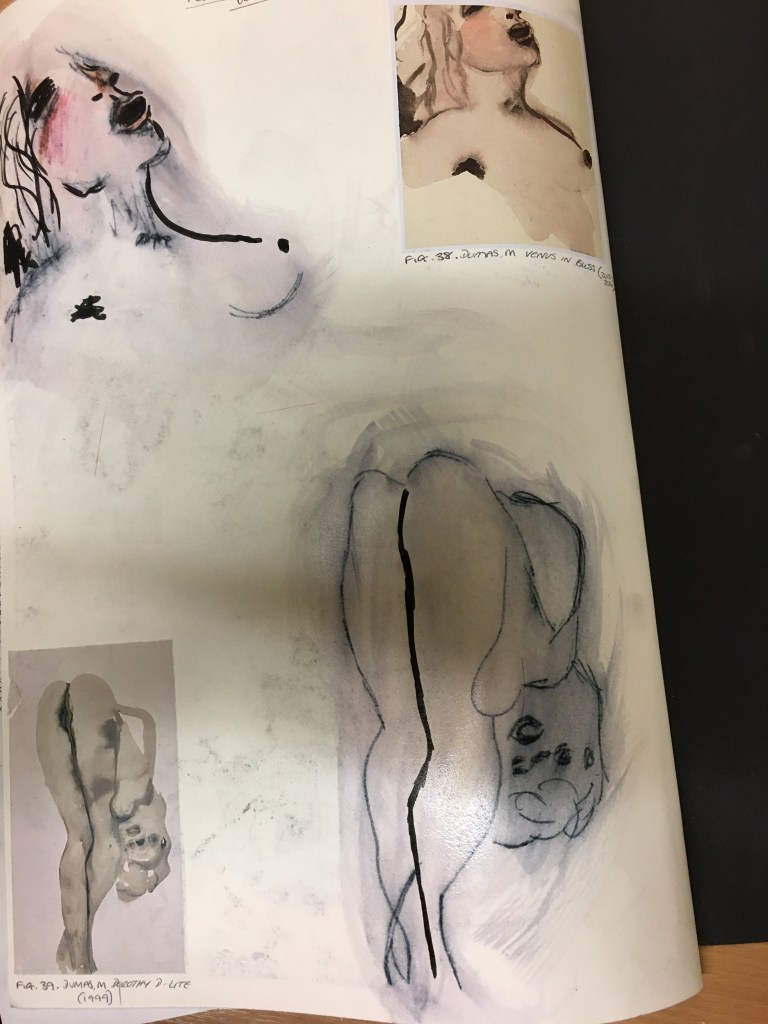Overall Comments
Thank you for your final submission Rachael. You have worked hard with your reviews and choosing a subject which you are passionate about. This has culminated in a large ambitious piece. However, there are some technical issues which could be addressed. Your artists statement describes your methodology rather than in-depth analysis of your themes. It’s in the last two paragraphs where your statement gives insight into the issues and themes of your work e.g. photosynthesis and humans interaction with nature. Overall, the assignment piece is meaningful and personal but quite tight in relation to the more fluid and freer drawing of figures which you have demonstrated before.
I am really pleased my tutor can see the effort applied within this Part of the course.
Having never done an artist’s statement before, I can now appreciate my tutor’s comments regarding the creation of an in-depth analysis of my chosen theme as opposed to my methods to achieve this. I can now appreciate that, instead of breaking down my plan of action, I should have delved deeper into what it was I was actually studying – focussing more on the interactions, qualities and characteristics of my chosen subject.
I totally agree that my final piece is very tight as opposed to fluid and that this, whilst being ambitious, could potentially have been a bit of a safe play on my behalf, however, I still feel I was right to go in this direction to secure such a strong result. I think I still have a way to go to fully control and make the most of my expressive nature.
Feedback on Assignment
Demonstration of Technical and Visual Skills, Quality of Outcome, Demonstration of Creativity
Assignment: You have paid attention and spent much time in drawing the hands and hair. These have been observed very well and the perspective is convincing, and form is apparent to give spatial grounding. The actual back, buttocks and torso could
be more observed in terms of fleshiness, muscle areas and bones. It sits as one block, so we lose some form. The positioning of the body is complex, and the foreshortening of the buttocks compared to the head seems on the same plane. So, do think about the perspective and the angle. The background distracts the viewer as it is busty and complex.
The tree is quite generic with the mark making and again, more attention could be given to the essence of it being a tree. The collaging of the background works well and this supports the colour scheme of the whole image. You have sued a variety of media with ambition but at the same time being selective and this works for the theme of the work.
Reading this feedback, I feel as though I am watching myself creating the piece and can appreciate how much dedication I gave to the head, hands and hair as opposed to the other areas of the body. I think if I were to go back and recreate this piece, I would give just as much time to the remaining parts of the piece as I had the hair, hands and head. I think the reason I did not do so in the first place was because I knew the hands, head and hair were all more complex in nature and areas I would have to give more attention to in order to be successful, however, in doing so, I feel I became complacent with the other parts of the final piece due to feeling they were easier to recreate, thus leaving them with much less detail.
I am majorly impressed that my selections have worked as well as I had hoped (if not completely) and I will definitely employ this more in the future.
Sketchbooks
Demonstration of Technical and Visual Skills, Demonstration of Creativity
5.3: Initial Conceptual Ideas and Studies
You have reviewed your work in your sketchbook and this shows some development towards the final art. In terms of practice and investigations into the human form, there could be more. Especially with the fundamentals of human figure, it’s anatomy
and the proportions. Also, with different investigations in to the media used.
I completely agree, I definitely could have done more in respect of experimenting with and investigating the human form and media used. Perhaps I was too ambitious in trying to incorporate two Parts of the course and so was unable to dedicate adequate time to one specific point.
Research
Context, Reflective Thinking, Critical Thinking, Analysis
5.2- Your artist research is all relevant and it’s been good for you to reiterate the themes and techniques from the ones which have inspired you. You have been in tune with looking at different techniques which inspire you. However, this could be more in-depth with you looking at the wider issues and themes of the subject of the human form.
I really enjoyed this research as it was completely specific to what I wanted it to be focussed on (though now I think I could have done more in the way of researching my chosen subjects and the media and techniques used). Again, perhaps using two subjects was a little too adventurous for this stage of my journey.
Learning Logs or Blogs / Critical Essays
Context, Reflective Thinking, Critical Thinking, Analysis
You have done a considerable amount of work in terms of reviewing, being self-reflective and being in tune with your areas of improvement and how to pursue to the final part. Your work in 5.1 shows good understanding of self-actualisation – well
done.
Your own commentary of the final assignment piece is in detail in terms of breaking down all the different elements of the process; from surfaces, to detailed drawing, to media exploration and final reflections of the overall piece.
I am pleased the effort applied to this area has shone through to my tutor. Clearly, this is the standard I have to try to attain every time throughout my journey.
Strengths
- Considerable amount of work has been done with your reflections throughout the unit. This has been supported by artists research into your chosen subject.
- Good use of varied media has been used without overwhelming the piece and this shows good selective choices.
- The successful areas are the hands and particularly the hair and this has been observed well.
Again, there is not much I can add here besides ensuring that I strive to achieve this level throughout the whole of my journey, if not more so.
Areas for Development
- There could be more grounding with the depth of the work. For example, more distinction between the foreground, mid and background- at the moment the main subject is a little lost within it.
- Technical aspects need attention with the assignment piece, such as foreshortening. The successful areas are the hands and particularly the hair and this has been observed well.
- Make sure you are looking at the ‘guidelines for submission’ especially in terms of discernment and the amount of work to send for assessment.
I agree regarding the grounding within the depth of the work, but wonder now whether this is something which will develop the further into my journey I travel, although it is something I will try to work on at every opportunity regardless.
I really enjoy working with foreshortening, so this is something I think will be imperative for me to perfect if I am to use this going further. Technical aspects do seem to be quite a struggle for me, so I think the more I can create quick sketches of a variety of subjects, the more this skill will improve.
With regard to the guidelines for submission, this is something I am rather excited to begin and look forward to submitting my work to be formally assessed. Wish me luck!

